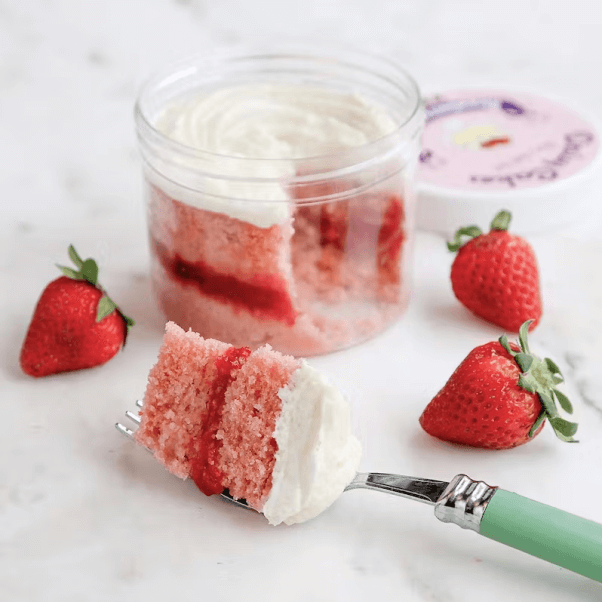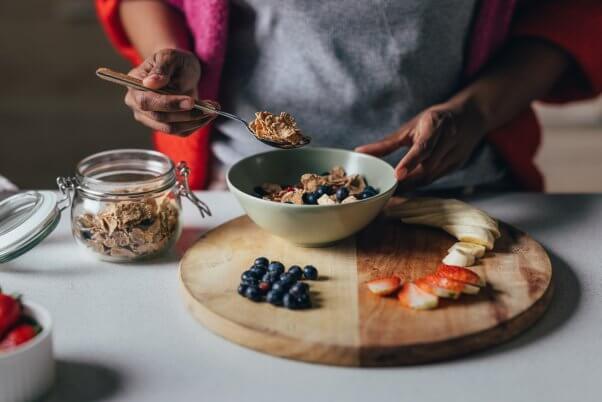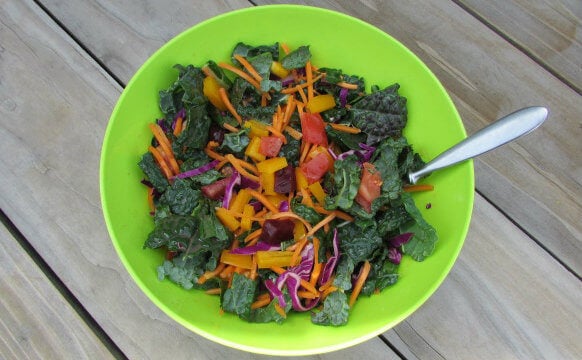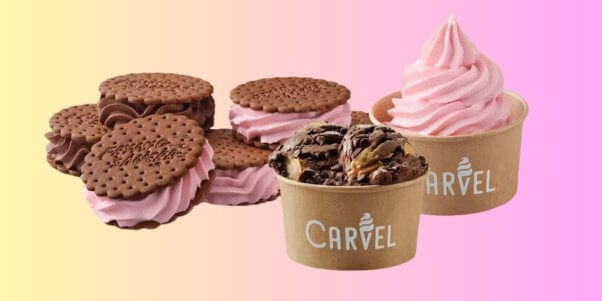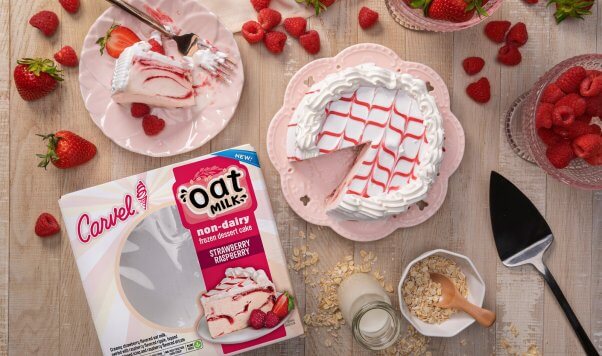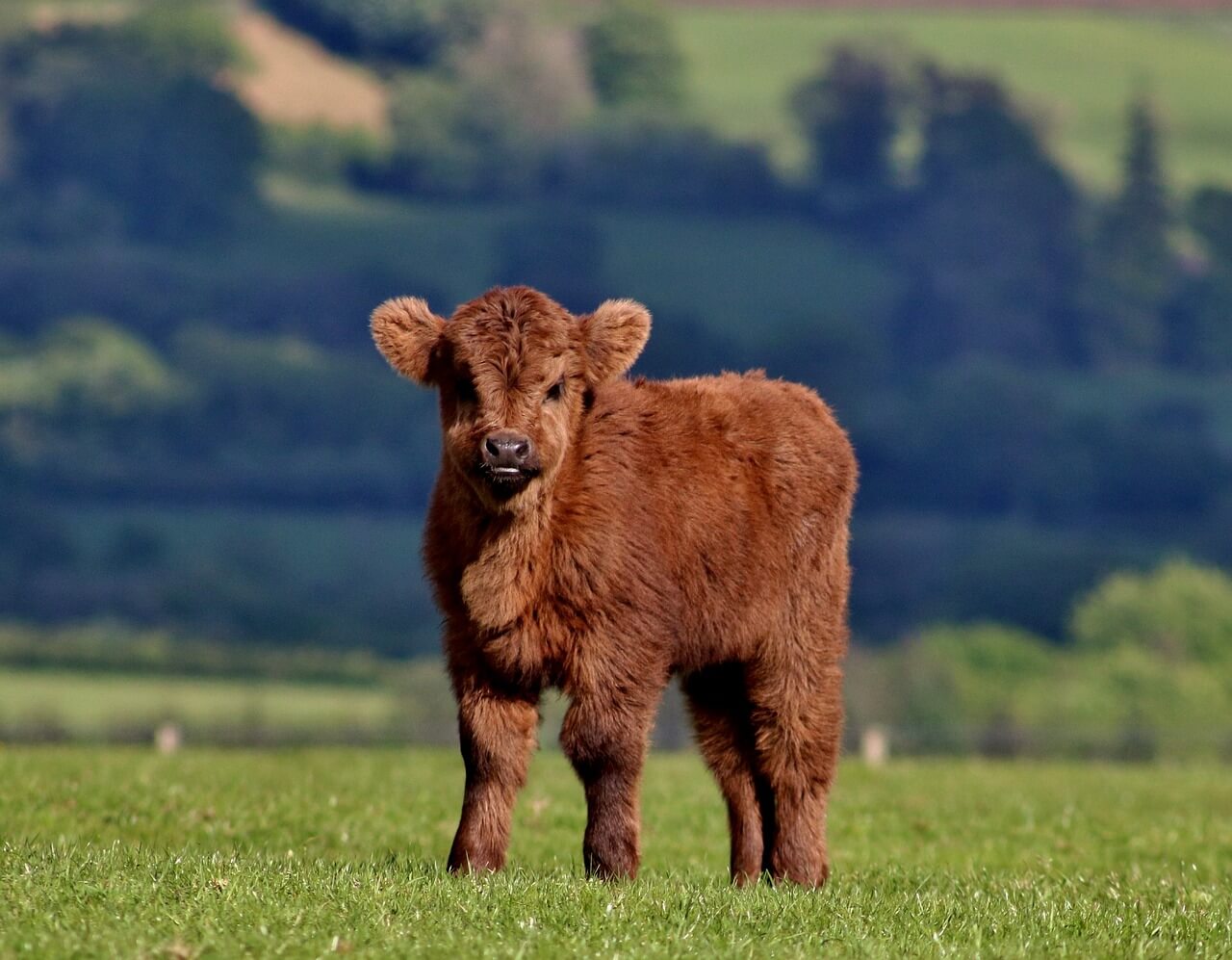This post was originally published on Canary.
-
From Michelle Obama to Kris Jenner, several of the world’s highest earners believe that an early start plays an instrumental role in their success. However, striving to adopt the 4am club lifestyle can have the reverse effect on your levels of productivity.
Here, Martin Seeley at MattressNextDay reveals exactly what happens to the body when we are too tired to work and how becoming a part of the 4am club impacts the body.
Recollections may vary
There are 4 stages of sleep under the umbrella of NREM (Non-Rapid Eye Movement) and REM (Rapid Eye Movement). NREM sleep makes up 75 to 80 percent of our sleep, whilst REM makes up the final 20 to 25 percent. Research shows that there is a link between NREM and a person’s ability to remember the likes of facts and data whilst REM aids in a person recalling sequences and events. Deprived sleep disrupts both NREM and REM which in turn, disturbs a person’s ability to remember data, facts, and even whole events. In fact, if sleep is frequently disrupted research has found that a person may start creating false memories.
‘In situations where ‘recollections may vary’, a lack of sleep could be to blame. You may feel that poor sleep hygiene doesn’t affect your productivity in the workplace however it may lead you to misremember conversations and tasks, and even making up events’.
Snap out of it
Inadequate sleep effects mood, often encouraging the feeling of frustration, anger, and even sorrow.
The limbic system is a part of the brain that plays an instrumental role in our behaviour, including our emotional reactions, particularly our fight or flight response. The prefrontal cortex aids in the regulation of our emotional responses and helps us decide how severe and rapid our responses should be.
The connection between the limbic system and prefrontal cortex is disrupted when we experience a lack of sleep, causing a stronger reaction to the limbic system. As a result, our reaction to everyday events isn’t just stronger, but harder to change in general.
‘Sleep deficiency may see you overreact to negative workplace scenarios, affecting workplace relationships and how colleagues perceive you. It may also see you make rash decisions that in the long run, are unnecessary.’
Snack at my desk
Sleep plays an important role in the function of the neuroendocrine system, (nerves and gland cells that create hormones to release them into the blood stream), and the metabolism. Several studies have shown that insufficient sleep can lead to weight gain as the body experiences a decrease in its tolerance to Glucose. An increase in cortisol and increased levels of ghrelin (a hormone that signals to the body it’s time to eat) is also apparent along with a reduction in Leptin (a hormone that works to maintain the body’s weight for a prolonged period).
‘When we are tired, we crave sugar and tend to snack at our desks. Sugar causes a rapid spike in the body’s insulin levels and then a harsh drop. The drop leaves us feeling lethargic and unmotivated, hindering our levels of productivity.’
‘First and foremost, the ‘4am club’ boasts a robust structure. The act of waking so early leads a person to immediately focus on the events of the day and what they wish to achieve. It’s not the physical act of waking up at 4am that leads to prolonged bouts of productivity, but the structure of the day.
To ensure that you reach optimum productivity on a day to day basis follow these 3 simple steps:
- Have a consistent sleep and wake time – Aim to sleep and wake at the same time every day, even at weekends
- Have as much exposure to natural light as possible, this will aid in the function of the body’s Circadian Rhythm
- Time stamp your day – Get out ahead of your day and draft a time table of the tasks that you aim to complete and the times that you will complete them. This will keep the tasks you are completing tangible and increase productivity’
This post was originally published on Canary.
-
Selecting the right air filter for a HVAC system is a critical decision that impacts both indoor air quality and the overall efficiency of the heating, ventilation, and air conditioning setup. HVAC air filters for home are essential in trapping dust, pollen, and other particulates, thus preventing them from circulating through the home. The correct filter size not only ensures that the unit runs efficiently but is also vital for maintaining a healthy environment. An improperly sized filter can lead to air bypass, where unfiltered air circulates back into the room, reducing indoor air quality and potentially aggravating health issues like allergies and respiratory conditions.
It’s important to note that HVAC systems are designed to accommodate filters of specific sizes, and using the wrong size can hinder the system’s performance. To find the correct filter, one must measure the length, width, and depth of the current filter or the filter slot. These measurements are essential for acquiring a filter that fits snugly without any gaps. A well-fitted air filter prevents unfiltered air from passing around its edges, ensuring that all the air that circulates through the system is as clean as possible.
Understanding HVAC Air Filters
Selecting an HVAC air filter requires understanding the types of filters available, the efficiency of each as measured by MERV ratings, and the significance of finding the right size for your system.
Filter Types and Materials
HVAC air filters are commonly made from materials such as spun fiberglass, pleated paper, or cloth, all designed to trap particulates and contaminants. The type of filter material affects its function and efficiency in cleaning the air. When considering filter types, pleated filters are notable for their larger surface area compared to standard fiberglass filters, which increases their ability to capture more particles.
Common filter types include:
- Fiberglass filters: Economical, disposable, and have a lower MERV rating.
- Pleated filters: Made from higher-quality fabric and usually have higher MERV ratings.
- HEPA filters: High-efficiency filters that can remove at least 99.97% of airborne particles.
MERV Ratings Explained
MERV stands for Minimum Efficiency Reporting Value, a standard rating that measures a filter’s ability to capture particles of varying sizes. The MERV rating scale ranges from 1 to 20, with higher numbers indicating finer filtration. Residential filters typically range from MERV 7 to MERV 13, while HEPA filters have ratings of 17 or higher.
MERV Rating Scale:
- MERV 1-6: Captures large particles like dust mites and pollen.
- MERV 7-13: Suitable for residential use, capturing smaller particles like mold spores and pet dander.
- MERV 14-20: Used in specialized environments like hospitals, capturing bacteria and tobacco smoke.
Importance of Air Filter Size
Air filter size is critical to ensure a proper fit and maximum efficiency. Filters that do not fit properly can allow air to bypass the filter entirely, rendering it ineffective. The air filter size is often described by its nominal size, which is the rounded-off measurement used for labeling, and its actual size, the precise measurements of the filter. Knowing both nominal and actual sizes is essential for choosing the right fit for your HVAC system.
Air Filter Size Guide:
Nominal Size Actual Size (L x W x H) 16″ x 20″ 15.5″ x 19.5″ x 0.75″ 16″ x 25″ 15.5″ x 24.5″ x 0.75″ 20″ x 30″ 19.5″ x 29.5″ x 1″ It’s necessary to measure the dimensions of your current filter or the filter slot to determine the correct size needed. Common sizes include 16″x20″, 20″x30″, and others, but it’s vital to remember that these are nominal sizes and the actual dimensions may be slightly different.
Selecting the Proper Size
Selecting the correct size for an HVAC air filter is crucial to ensuring optimal system performance and air quality. Precise measurements of length, width, and thickness are necessary for a proper fit.
Measuring for the Right Fit
To measure an existing air filter, one must remove it from its slot or compartment. The filter slot, typically located next to the return air vents or within the HVAC system, should be measured for length (top to bottom), width (side to side), and depth (front to back). These measurements are typically recorded in inches. For example, if an air filter measures 20 inches long by 25 inches wide with a thickness of 1 inch, it should be written as 20″ x 25″ x 1″.
- Length: Measure from top to bottom of the filter.
- Width: Measure from side to side of the filter.
- Thickness or Depth: Measure the front-to-back of the filter.
It’s imperative to ensure these dimensions correspond to the available space in the HVAC unit’s filter compartment to avoid system inefficiencies or airflow blockage.
Nominal vs. Actual Size
HVAC filters come in two size categories—nominal and actual size. The nominal size refers to the rounded numbers often indicated on the filter label or the filter’s frame by the manufacturer and is the size by which the filter is commonly identified. For instance, a filter may be labeled with a nominal size of 20″ x 25″ x 1″.
The actual size can differ slightly and represents the exact dimensions of the filter. These measurements might be smaller than the nominal size and are critical when it comes to the precise fit within the filter compartment. A filter’s model may also provide details regarding its actual size, enabling a more seamless replacement. Identifying the correct actual size ensures that the filter performs efficiently and effectively without any gaps or overlaps.
- Nominal Size: The labeled size, is rounded to the nearest whole number.
- Actual Size: The precise measurement, often slightly smaller than the nominal size.
For an accurate replacement, the actual size should be used when selecting a new HVAC filter. If the actual size is unknown, one can consult the documentation provided by the HVAC system manufacturer or measure the existing filter carefully to determine the exact size needed.

Installation and Maintenance
Proper installation and regular maintenance of HVAC filters are crucial for ensuring both optimal filter efficiency and the longevity of residential HVAC systems. Incorrect filter installation can lead to increased energy costs and potential damage to the system.
Replacing Your HVAC Filter
To replace an old filter, one should first ensure the power to the HVAC unit is off to prevent any safety hazards. The next steps include:
- Locating the filter slot on the HVAC unit.
- Carefully remove the old filter, noting the direction of airflow marked by an arrow on the filter’s frame.
- Choosing the correct replacement filter that matches the size required for the specific HVAC unit.
One should measure the length, width, and depth of the old filter or consult the HVAC unit’s manual for size requirements. Common dimensions include length and width, with depth typically being 1 inch. However, the actual filter size might be slightly smaller than these nominal dimensions. For instance, a 16″ x 20″ x 1″ filter may measure 15.75″ x 19.75″ x 0.75″.
- Inserting the new filter into the slot, making sure the arrow for airflow direction on the filter aligns correctly towards the blower.
- Securing any fasteners or latches to keep the filter fit snugly in place, preventing air bypass.
Common Issues with Filter Sizes
A wrong size filter can lead to several problems:
- Gaps around the filter: Allows unfiltered air to circulate through the system, reducing filter efficiency.
- Overly snug fit: Makes filter replacement difficult and can compromise the structural integrity of the filter, potentially leading to damage.
- Incorrect thickness (depth): Can affect the maximum airflow rate, which might result in increased energy consumption and reduced efficiency.
It is crucial that homeowners check the specific size requirements of their HVAC system rather than assuming common sizes fit all. When in doubt, consult with a certified HVAC technician to avoid issues related to improper filter size. Regular maintenance checks are recommended to ensure filters are in good condition and the HVAC system functions effectively.
Air Quality and Health Concerns
Choosing the right HVAC air filter is crucial for maintaining indoor air quality and managing health concerns relating to airborne pollutants. Effective filtration can trap dust particles, pet dander, and other allergens, reducing the risk of allergies and respiratory issues.
Impact of Filters on Indoor Air Quality
HVAC air filters play a vital role in capturing a wide array of airborne contaminants, including dust, pet dander, dust mites, pollen, and bacteria. High filtration efficiency is paramount in restricting the circulation of these contaminants. Furnace filters with higher MERV (Minimum Efficiency Reporting Value) ratings can potentially trap smaller particles and even certain types of viruses, thus significantly enhancing the indoor air quality.
- Common Airborne Contaminants:
- Pollutants
- Dust particles
- Pet dander
- Allergens
- Airborne contaminants
- Bacteria
- Viruses
Benefits of Frequent Filter Replacement
Regularly replacing HVAC air filters can not only maintain optimal air quality but also can prevent the HVAC system from overworking, leading to higher energy efficiency and lower costs. It is advised to replace filters every 90 days to ensure peak system performance. Consistent replacement mitigates the accumulation of dust and allergens, supporting a healthier living environment and helping individuals with allergies or other respiratory conditions.
- Replacement Benefits:
- Improved air quality by reducing pollutants and allergens.
- Enhanced performance and lifespan of HVAC systems.
- Lower energy costs due to improved airflow and system efficiency.
By understanding the direct correlation between air filter selection and replacement frequencies, individuals can ensure that their indoor air remains clean, thus supporting a healthy living space.
This post was originally published on Canary.
-
Co-living for vapers and non-vapers requires both understanding and compromise from all parties involved. Central to achieving this balance is the thoughtful selection and use of vaping products. While products like Ela Pre-filled pods are a choice among many, the key lies in how individuals choose to engage with their vaping habits within shared spaces.
Setting guidelines for vaping in shared homes
In shared living environments, establishing clear guidelines for vaping is crucial to maintaining harmony among residents. This involves creating a set of mutually agreed-upon rules that respect everyone’s comfort levels and preferences. Key to this process is designating specific areas within the home for vaping, ideally well-ventilated spaces that minimise the spread of vapour to common areas.
Equally important is setting clear times when vaping is permitted, especially in shared spaces, to avoid any inconvenience to non-vapers. For instance, agreeing not to use vaping products during communal meals or family gatherings can foster a respectful living atmosphere. Additionally, implementing rules around the types of vaping products used, favouring those with less intrusive or odourless vapours, can further ensure that the home environment remains pleasant for all occupants.
Open dialogue about vaping practices is essential, allowing for adjustments that accommodate everyone’s comfort while upholding the shared values of the household.
Communication and compromise: The keys to cohabitation
Effective communication and compromise are foundational to creating a peaceful cohabitation environment, particularly when it comes to the use of vaping products in shared homes. Open, honest discussions about vaping preferences and concerns allow all residents to voice their opinions and find a middle ground that respects individual freedoms while considering the comfort of others. Initiating regular household meetings to discuss such matters can prevent misunderstandings and ensure that everyone’s needs are addressed.
Compromise might involve agreeing on specific times and places for vaping, or selecting products with minimal odour to avoid discomfort. Such agreements should be flexible, allowing for adjustments as the living situation evolves. Ultimately, the goal is to maintain a balance where vaping does not become a source of contention, and the home remains a space of comfort and respect for all inhabitants.
Navigating vaping practices in homes with children
When children are present in shared living spaces, the approach to vaping requires additional consideration and sensitivity. It’s essential to create an environment that prioritises the health and safety of young residents, taking into account how exposure to vaping can influence them both physically and behaviourally.
Firstly, it’s critical to understand that children are more susceptible to environmental influences, including second-hand vapour exposure. Although vaping is often seen as a less harmful alternative to smoking traditional cigarettes, the long-term effects of vapour on children’s health are still being studied. With this in mind, ensuring that vaping does not occur in indoor spaces or areas where children spend a significant amount of time is a foundational step in safeguarding their well-being.
Moreover, the presence of rechargeable vaping devices and liquids in homes with children necessitates strict storage measures. Keeping these items out of reach and sight of children helps prevent accidental ingestion or misuse, which can lead to serious health emergencies.
Lastly, creating a vape-free policy in homes with children sends a strong message about prioritising their health and well-being. It encourages residents and visitors to adopt more cautious vaping practices, such as stepping outside the home to vape, further minimising children’s exposure to vapour and the act of vaping itself.
This post was originally published on Canary.
-
If you are feeling like your existence is getting boring and mundane, one sure way to bring some excitement into your life is to start a new hobby.
It doesn’t have to be something that costs a lot of money, but perhaps just something that you have always had an interest in but not got around to pursuing.
Life is so fast-paced and full of stress nowadays that it is important to set aside some “me” time to do the things that make you happy.
In this article, we have listed five new hobbies that you could consider trying in 2024.
Playing penny slots online
While we wouldn’t exactly call playing penny slots a hobby as such, it certainly can provide a lot of entertainment, much like a hobby. Improvements in technology have made playing penny slots very convenient, in that you can play them from the comfort of your own home.
All slot machines have what is called a Return to Player (RTP) number. RTP means the percentage of the money wagered by the players that is paid back on a long-term basis.
The RTP is different from one casino to another or from one slot game to another. Therefore, you should go for slots with a higher RTP to be able to benefit from all the playing in the long run. Most UK casinos list the RTP of their slot games in the information section of the slot. Also, be aware that some slots have a variable RTP, which means it may be high at one casino and lower at another casino, so this is also important to check.
Urban gardening
Another great hobby to take up in 2024 is urban gardening. With the growth in awareness of sustainability and self-sufficiency, city gardening is enjoying renewed enthusiasm. Even if you don’t have a lot of space, you can garden on balconies, rooftops or windowsills, using containers or vertical gardening methods.
Urban gardening not only provides you with fresh vegetables but it also helps to reduce stress and brings some greenery into boring and drab cities. It doesn’t matter whether you choose to grow herbs, vegetables or colourful flowers, you will get a deep sense of satisfaction from it.
There is nothing better than watching something grow when you have nurtured it from a seed.
Mindfulness meditation
Another hobby that has become very popular in 2024 is something called mindfulness meditation. Nowadays, with the pressures of everyday life, people are trying to find a way to relax, to have their mental health in a good state and to achieve inner balance. Mindfulness meditation stands as a holistic way of self-care through developing the ability to be present in the current moment with concentrated attention and non-critical acceptance.
Through a regular discipline of mindfulness meditation, people can learn to be more resilient to stress, better regulate their emotions and connect with a deeper sense of themselves and others. Regardless of whether it is a personal exercise or participating in guided meditations through meditation apps and community classes, including mindfulness in your daily routine can have tremendous positive effects on your health and well-being.
Digital art
For art enthusiasts who are looking for a creative outlet, digital art is a fantastic hobby to explore in 2024. Advances in technology and software have been making it easier for ordinary folks of all classes to access digital art.
No matter whether you love graphic design, illustration or digital painting, there are scores of tools and resources to enable you to unleash your imagination.
Digital drawing tablets, professional software applications and different styles and techniques are tools for digital artists that allow them to experiment and bring their vision to life. At the same time, online communities and social media platforms provide opportunities for artists to make friends, share inspiration and receive comments on their work, which in turn leads to growth, both personally and as a community.
Home brewing
Lastly, home brewing has found its way among beer lovers and DIY fans in the year 2024 as well. The growing interest in craft beer is the result of more people experiencing the pleasure of brewing at home.
Home brewing provides an opportunity for people to try out different ingredients, flavours and brewing styles to come up with new recipes that are personalized and fit their tastes.
Whether you are into a traditional ale or just like to experiment with different tastes, you do not need to worry about the resources because there are plenty of them, including home brewing kits, online tutorials and local brewing communities.
Immersion into the arena of home brewing assists amateurs in discovering the beauty of beer production as well as the pride of sharing with friends and family.
Many other hobbies can be explored
Although we have listed five hobbies in this article, there are, of course, many other traditional regular hobbies to consider.
Some of these are stamp collecting, model building, flying kites and many more.
It doesn’t really matter which hobby you choose – just do something you enjoy and look forward to, as it is the perfect way to de-stress.
This post was originally published on Canary.
-
Integrating metal into home design is not only about embracing modern aesthetics but also about utilising the strength, flexibility, and variety that metal materials offer. From sleek stainless steel to rustic wrought iron, metals can complement any interior theme, adding both functionality and a touch of sophistication. This guide will explore how various metals, including the versatile “box section mild steel”, can enhance your living spaces.
The Appeal of Metal in Home Design
Metal in-home design brings a blend of durability and sleek aesthetics. It’s a material that adapts well to different styles, from industrial chic to contemporary minimalism. Metals like aluminium, copper, and steel reflect light and can make spaces appear larger and brighter. Moreover, their resistance to wear and tear makes them ideal for high-traffic areas in the home.
Incorporating Metal in Structural Elements
One of the most common ways to include metal in home design is through structural elements. Steel beams and columns are used in construction for their strength and durability, but they can also be left exposed for a striking visual impact. Exposed metal structural elements can be painted to match any interior design or left in their raw form for an industrial look.
Decorative Metal Accents
Metal can transform the look and feel of a room through decorative accents. Items such as brass door handles, copper light fixtures, and stainless steel kitchen backsplashes add distinctive highlights. Metal furnishings, including iron bed frames or metal-legged tables, bring a solid, grounded feeling to rooms, balancing softer materials like wood and textiles.
Metal in Furniture
The use of metal in furniture offers both aesthetics and functionality. Metal frames for chairs, tables, and beds are not only sturdy but also provide a sleek, clean look that complements any décor. When combined with other materials like glass or wood, metal furniture pieces can act as stunning focal points in any room.
Innovative Uses of Metal in Home Design
Innovative applications of metal in home design go beyond the usual fixtures and furniture. Metal wall panels can create an exciting texture contrast in any space, while decorative metal screens and room dividers add elegance and privacy. Metal can also be used in staircase design, combined with wood or glass to produce a stunning visual effect.
The Role of Box Section Mild Steel
Midway through exploring the integration of metal in home design, it’s crucial to highlight a particular type of metal that offers both versatility and functionality: box section mild steel. This material is renowned for its robustness and ease of use in various applications, from structural components to decorative features.
Box section mild steel can be used in the creation of custom furniture frames, shelving units, and even bespoke architectural features. Its clean lines and boxy shape make it perfect for modern, minimalist designs where form follows function. This type of steel can be painted, powder-coated, or treated with patinas to match any colour scheme or design aesthetic, making it a highly adaptable option for creative home design projects.
Metal in Outdoor Design
Extending metal elements to outdoor spaces can create a cohesive flow from indoors to outdoors. Metal furniture, such as wrought iron patio sets, offers durability against the elements while maintaining elegance. Metal sculptures or art pieces can serve as impressive focal points in gardens or entryways. Additionally, metal fencing and gates not only provide security but also enhance curb appeal with intricate designs.
Sustainability and Metal
Today’s emphasis on sustainability makes metal an even more appealing choice for home design. Many metals are highly recyclable, reducing their environmental impact. Using recycled metal products or choosing local metal workshops for custom pieces can contribute to a more sustainable home environment.
Maintenance Tips for Metal in Home Design
While metal is durable, proper maintenance is essential to keep it looking its best. Regular cleaning, polishing, and sometimes lacquering are necessary to prevent oxidation and corrosion, especially in metals like iron and steel. For metals used outdoors, like aluminium or galvanised steel, routine checks for weather-related wear and tear will prolong their lifespan and appearance.
Conclusion
Integrating metal into your home design is a brilliant way to add both functional and aesthetic value to your living space. Whether you choose structural elements like box section mild steel for its sturdiness or decorative accents for its sleek appeal, metal can transform any home into a stylish, contemporary haven. With its versatility and durability, metal is an excellent choice for anyone looking to upgrade their home design.
Featured image via RossHelen – Envato Elements
By The Canary
This post was originally published on Canary.
-
It’s International Carrot Day! The best way to show that you carrot all about animals, the planet, and your health is to go vegan—and PETA’s charismatic mascot Chris P. Carrot is rooting for everyone to make the compassionate switch.
From gentle mother cows who protectively coddle their young to curious hens who establish meaningful friendships, every animal is someone with their own feelings, interests, personalities, and needs. The meat, egg, dairy, and fishing industries exploit and kill billions of these sensitive living beings every year while destroying the environment. The United Nations has said for many years that a global shift toward vegan living is necessary to combat the climate catastrophe and other environmental crises.
For International Carrot Day, join Chris in his mission to spare animals, protect Mother Earth, and bolster human health by going vegan.
20 Years of Activism: See How Our Vivacious Veggie Has Championed Animal Rights
January 29, 2004: Chris P. Carrot entered the presidential race with his running mate, Colonel Corn, to urge everyone to get back to their roots by eating more fruits, veggies, and grains.
August 14, 2005: Chris walked the red carpet before the Comedy Central Roast of Pamela Anderson with the compassionate star and target of the event—who only agreed to do the roast on the condition that Comedy Central donate to PETA and air our ads during the special.
January 31, 2007: In an article in the National Hog Farmer, Chris was cited as the main reason why Smithfield decided to stop confining pregnant pigs to gestation crates—or stalls so tiny that the animals can’t even turn around in them. The article noted that it “appears that US grocery stores and restaurants will do whatever they have to do to keep that PETA guy in the carrot suit from standing in front of one of their stores.”
May 23, 2008: Chris attended the Veggie Pride Parade in New York City with Penelo Pea Pod, despite silly claims that root vegetables and legumes don’t belong together. One agitated hot dog vendor apparently blamed the duo for his lack of success, saying, “It’s because of the vegetarians …. It’s one of my worst days in four years.”
June 30, 2009: Chris made a star appearance at San Francisco’s Gay Pride Parade with PETA’s “Lettuce Ladies” and “Broccoli Boys.”
June 8, 2010: Chris joined Toronto’s first annual Veggie Pride Parade.
August 30, 2010: Chris attended a “Tea Party” rally to promote vegan living.
January 22, 2013: Chris attended President Barack Obama’s second inauguration with Celery Stalk and Mother Earth and distributed PETA’s vegan starter kits and copies of the video “Glass Walls,” a groundbreaking exposé of the meat industry narrated by Sir Paul McCartney.
June 16, 2015: Chris led the PETA brigade at the Capital Pride festival in Washington, D.C.
January 20, 2017: Chris attended President Donald Trump’s inauguration and urged the crowd to go vegan.
September 20, 2017: Chris traveled with his old pal Colonel Corn to Charlotte, North Carolina, for the International Day of Peace to promote nonviolence in food production.
January 10, 2024: Chris joined the campaign trail in Iowa to urge attendees at the first caucus of the 2024 primary season to go vegan for animals, the environment, and human health. He went on to South Carolina to continue his work.
Join Chris by Going Vegan
The adventures of PETA’s carrot mascot represent just one of our projects to change the world for chickens, cows, pigs, fish, and other animals around the world. Let’s crunch our way to a brighter, greener future together! Order PETA’s free vegan starter kit to start saving animals today:
The post From Seedling to Superstar: 20 Years of Vegan Inspiration From PETA’s Mascot appeared first on PETA.
This post was originally published on Animal Rights and Campaign News | PETA.
-
Many people learn a musical instrument as children. For some, it’s the start of a life-long passion for music – the instrument they first learned in childhood becomes a hobby, an escape, or even a profession.
Others, however, lose the connection with that musical part of themselves. As the busyness of life takes over, we find that years later, we’ve not touched an instrument. We find ourselves wondering if we will ever get round to picking up an instrument again, and even doubting how to approach it.
For some of us, rather than returning to an instrument you scarcely remember, and are rather rusty at playing, it’s easier to ease yourself back in with something a little more approachable. Here are five great instruments that are easy to pick-up, whatever your musical level.
Tin whistle
The tin whistle, also known as the Irish whistle or the penny whistle, is a simple wind instrument with 6-holes. Held similarly to a recorder, the whistle is a staple of Irish and celtic folk music. But its appeal is wider than it – this accessible and easy-to-pick-up instrument has ancient origins in countries around the world, and so appears in the musical tradition of many cultures.
The beauty of the tin whistle is that beginners can learn how to play the basic notes on the tin whistle within a matter of minutes. At the same time, the instrument has a rich tradition, and as experienced folk musicians will attest that, takes years to truly master.
Kalimba
The kalimba, also known as the thumb piano, is a simple, tuned-percussion instrument that is derived from the Zimbabwean mbira. The kalimba consists of metal “keys” attached to a wooden plate, that are generally played with the thumbs – which is how it became known by some as a “thumb piano.”
The beauty of a kalimba is that it is very easy to quickly go from a total beginner, to playing a riff or sequence that sounds surprisingly beautiful. Even without understanding any music theory, with a little bit of experimentation, and a little bit of rhythm, most people get a pleasant sound of a kalimba within a matter of minutes. From there, the only way is up!
Tongue drum
Perhaps less-known than the other instruments on this list, the tongue drum is an underrated instrument for beginners. Technically defined as a type of idiophone, tongue drums are available in a range of keys (a pentatonic key is recommended for beginners). Usually fashioned from a steel vessel, it is called a tongue drum because slits or ‘tongues’ are cut into the vessel, with each tongue becoming an individual note within a scale.
You really don’t have to spend much to get a good sounding tongue drum – even the cheap ones are often beautiful sounding instruments. Easily played with the hands or with beaters, tongue drums enable you to combine rhythm and melody in an intuitive way. It’s easy to find yourself getting lost in a trance with a tongue drum, thanks to their gorgeous tone, and simple playability.
Djembe
The djembe is perhaps the best known and most popular form of hand drum in the world today, partly because it’s so accessible. A djembe typically uses an animal skin, that is pulled over a goblet-shaped wooden drum, and which is held in place and tuned with string.
With its ancient origins in West Africa, the djembe sound is characterised by its boomy and resonant open sound, and crisp, muted slap sound. These two simple tones provide the foundation for this simple and effective instrument, which has proven to be one of the most popular percussion instruments of our time. In recent times, djembes have become particularly popular in drum circles and community drum groups.
Ukulele
The ukulele is a fantastically easy instrument to pick up. With its characteristically sweet, round tone, the ukulele is extremely versatile. Thanks to its nylon strings (and the fact that there are only four of them, rather than six!),it is more comfortable to play than a guitar, and easier to learn. It’s also extremely lightweight, making it easy to carry around with you to festivals, to the park, or wherever you feel like playing.
Like the guitar, the ukulele is an excellent accompaniment instrument, making it the perfect foundation for singalongs. Thanks to its huge popularity in recent years, you’ll be able to find arrangements and tabs for almost any song you can think of, which means you’ll be able to play along with all the greats.
This post was originally published on Canary.
-
The journey towards academic success is as unique as the individual embarking on it. For students navigating the International General Certificate of Secondary Education (IGCSE), crafting a personalised learning path offers a compelling way to engage with their studies, catering to their strengths, interests, and future aspirations.
This approach enhances the learning experience and empowers students to take control of their education. Let’s dive right in and discover how IGCSE students can create their own academic journeys!
Understanding Personalised Learning
Personalised learning represents a transformative shift in how education is approached, moving away from the traditional methodology that often places students in a uniform learning trajectory, regardless of their individual needs, strengths, and areas for improvement.
This innovative approach prioritises the customisation of education, ensuring that the learning experience is moulded to the unique requirements, abilities, and preferences of each student. It acknowledges the diverse spectrum of learning styles, cognitive speeds, and interests that students bring to their educational journeys.
For IGCSE students, the implementation of personalised learning means they are afforded the flexibility and autonomy to direct their focus more intensely on subjects that ignite their passion or dedicate additional time to areas where they face challenges.
This bespoke approach caters to their academic development and personal growth, encouraging a more engaged and self-directed form of learning. It’s about creating an educational experience that resonates with them on an individual level, making learning more meaningful and, ultimately, more effective.
Setting Goals and Identifying Interests
The journey towards a personalised academic path begins with goal setting, a crucial step that lays the foundation for a tailored learning experience.
IGCSE students are encouraged to introspect and articulate what they wish to achieve through their studies. This could range from preparing for further education, such as A-levels, to acquiring foundational knowledge for a chosen university course or developing skills pertinent to a future career path.
Setting these objectives early in their academic journey ensures that students can select subjects and dedicate their efforts in a manner that aligns with their long-term goals.
Customising Study Plans
Armed with clear goals and a keen understanding of their interests, IGCSE students can then proceed to customise their study plans. This crucial step involves selecting subjects that serve both their academic ambitions and personal inclinations, offering a curriculum that is as enriching as it is educational.
The IGCSE curriculum’s breadth and flexibility empower students to tailor their academic paths to suit their individual needs and aspirations, enabling a truly personalised educational experience.
Leveraging Resources
Today, information is at our fingertips, and IGCSE students stand to benefit significantly from the plethora of educational resources available online. Platforms like Save My Exams are at the forefront. IGCSE resources from Save My Exams provide an extensive array of revision materials meticulously tailored for the IGCSE curriculum. These resources range from comprehensive notes and past examination papers to detailed mark schemes and structured revision guides, providing students with the tools they need to excel.
What truly sets these platforms apart is their commitment to accommodating diverse learning styles. Recognising that students absorb and process information differently, these resources are designed to cater to a wide range of preferences, whether that’s through visual aids, interactive quizzes, or succinct notes.
This adaptability not only makes study sessions more productive but also ensures that students remain engaged and motivated throughout their revision, fostering a learning environment that is both effective and enjoyable.
Reflecting and Adjusting
Personalised learning is akin to navigating a journey where the path is not fixed but adaptable, based on the traveller’s experiences and the landscape’s changes. It demands continuous reflection and the willingness to tweak and adjust strategies as needed.
IGCSE students are encouraged to engage in regular self-assessment, not just at the end of a term or before exams but as an integral part of their learning process. This reflection involves evaluating their understanding of subject matter, the effectiveness of their study techniques, and their overall progress toward set goals.
Questions like “Am I truly grasping the concepts in my most challenging subjects?” or “Do the study materials I use captivate my interest and facilitate effective learning?” should be at the forefront of this reflective practice. It’s about identifying what’s working and what isn’t. For instance, if a student finds themselves struggling to stay focused using a particular study resource, it might be time to explore alternative materials or methods that could reignite their engagement and comprehension.
Adjustment is the natural next step following reflection. It might mean reshaping study schedules to allocate more time to subjects that require greater attention or diversifying revision techniques to enhance understanding and retention. Sometimes, it could also involve a more profound reassessment of one’s goals and interests, especially if they’ve evolved over time.
Flexibility and the courage to make changes are crucial components of personalised learning. They enable students to continuously refine their approach to their studies, ensuring that their education journey remains aligned with their aspirations and responsive to their needs.
The Role of Support Networks
In the pursuit of a personalised educational journey, the value of a robust support network cannot be overstated. While the essence of personalised learning is rooted in individual choice and self-direction, the guidance, feedback, and encouragement from others play an indispensable role in shaping a student’s path. Teachers, mentors, family members, and peers constitute this vital support system, offering a blend of academic advice, motivational support, and practical assistance.
Teachers and mentors, with their expertise and experience, can provide invaluable insights into subject matter, suggest resources, and offer strategies to tackle academic challenges. Their feedback on performance can help students pinpoint areas for improvement and refine their study techniques. Meanwhile, family members play a critical role in providing emotional support and creating a conducive learning environment at home. Their encouragement can bolster a student’s confidence and resilience, especially during challenging periods.
Peers, on the other hand, offer a unique form of support. They can relate to the academic and emotional challenges faced during the IGCSE years. Study groups, peer tutoring, and sharing experiences and tips can be incredibly beneficial. These interactions aid in academic learning and foster a sense of belonging and community, which is vital for emotional well-being.
For IGCSE students, actively building and nurturing these relationships can significantly enhance their educational experience. Engaging with teachers for academic advice, leaning on family for support and motivation, and collaborating with peers for shared learning opportunities can make the journey through personalised learning a more enriching, enjoyable, and successful endeavour.
Looking Ahead
As IGCSE students tailor their education to their unique needs and aspirations, they’re not just preparing for exams; they’re laying the foundation for future success. Personalised learning paths encourage students to take ownership of their education, fostering skills like self-discipline, time management, and critical thinking. These skills are invaluable, extending far beyond the classroom and into university, careers, and life.
In conclusion, personalised learning offers IGCSE students a powerful approach to education, one that recognises their individuality and empowers them to shape their own academic journeys. By setting clear goals, aligning studies with interests, leveraging the right resources, and embracing flexibility, students can transform their IGCSE experience into a successful and deeply rewarding one.
This post was originally published on Canary.
-
Known for its rich history and cultural significance, Britain reflects a diversity of tastes and traditions that span generations. It is also constantly modernising and creating new, innovative forms of entertainment. From quiet outdoor activities to the adrenaline rush of sporting events, the UK offers exciting time fillers for people of all ages and backgrounds.
Gardening, the main British occupation, has a special place in the hearts of many. Caring for lush greenery and colourful flowers and creating tranquil outdoor sanctuaries are activities that millions of people across the country love. The therapeutic advantages of gardening and the satisfaction of seeing seed flowers form a living showpiece make it a perennial British favourite.
For sporting enthusiasts, the UK boasts a proud array of sporting pursuits from storied football and rugby traditions to cricketing icons. Whether you’re playing your favourite team cheer on in a glittering stadium or attending friendly games with friends and family, a sport that unites communities beyond Britain’s borders.
There’s a deep sense of passion for gourmet cooking, which also figures prominently in British culture, with cooking and baking dominating many homes. From perfecting classic dishes passed down across generations to exploring new culinary creations, the kitchen is a focal point for creativity and family bonding. Cooking shows and the rise of food blogs have just made the country more interested in all things and encouraged people to try new flavours and techniques.
For a more sophisticated crowd, an evening at the opera or ballet can be the latest rage. An event that requires months of preparation in booking tickets and looking for an elegant outfit. The London Ballet School is a renowned company that produces high-quality shows that many may try and struggle to find the underlying meanings through the medium shown. Similar to going to an opera or live concert, it’s an acquired taste. In the last few years, however, there has been a rise in catering to a modern audience. There have been recent live orchestras accompanying a screening of classic shows like Lord of the Rings or Harry Potter.
Among modern attractions, bingo is a firm favourite, deeply embedded in British culture and popular with young adults and old players. Whether they enjoy traditional brightly lit bingo halls adorned with warm friendships or on digital platforms offering differentiated innovations and interactive features, bingo continues to so capture hearts and minds across the country. The shared excitement of marking the numbers and the anticipation of shouting “Bingo!” It creates fun and camaraderie while touching a variety of older generations; even the new online bingo games and websites make it more accessible for those who might not want to leave the house for entertainment.
There is always time for people to stubble upon a new hobby or actively try to find something new. What unites Britons is a shared appreciation of leisure activities that bring happiness and fulfilment, and a sense of community. In a fast-paced world, this downtime is something that is much needed and important. People need to reconnect with themselves, their loved ones, and the world around them so, whether you indulge in a hobby that you are interested in or are discovering something new, take some time to enjoy the simple hobbies that make life truly enjoyable.
This post was originally published on Canary.
-
Every year at Natural Products Expo West, companies gather to show off new and exciting vegan products that will hit store shelves soon. This year, PETA staffers had a chance to try some of these items and get a sneak peek into the future of animal-friendly foods. Here’s a recap of the products we spotted, which you can expect to see in stores later in 2024 and into 2025.
Easy Eats
From healthy packaged meals to meat-free protein options that will help make dinner easy and delicious, quick foods were everywhere at Expo West this year.
The collaboration between NotCo and The Kraft Heinz Company was the star of the show, with the launch of its animal-friendly Oscar Mayer NotHotDogs and NotSausages, which have the familiar savory, smoky taste but no animal flesh—because every animal is someone who feels love, pain, joy, and fear and deserves our respect.
The Kraft Heinz Not Company’s booth also highlighted the vegan version of the classic creamy Kraft boxed Mac & Cheese, which offers a way to experience a nostalgic taste without exploiting mother cows for their milk.
Asian-inspired eats made a huge splash, too. Some of the products included the following:
- OMNI’s Plant-Based Teriyaki Bao Buns are soft and satisfying.
- Rawmyun’s Savory Curry Ramen is low-oil instant ramen made with rice noodles.
- Sobo Foods’ Chinese “Pork” & Chive Dumplings feature a whopping 19 grams of vegan protein.
- 24vegan’s Vegetable Green Curry with Organic Brown Rice microwave meals are a healthy and quick lunch option.
We also saw packaged Korean kimbap from at least four brands—Baba, Ocean’s Halo, Sunlit, and UNLIMEAT—possibly inspired by the viral success of Trader Joe’s frozen vegan version.
UNLIMEAT, a Korean brand, is also launching its products in U.S. markets, with items like Bulgogi Jumukbap and vegan Pork Mandu.
Vegan chicken is a hit every year, because choosing this delicious and crowd-pleasing option spares the lives of countless intelligent, playful birds. We spotted a few new products, including Chef Chew’s Kitchen’s Spicy Fried Chicken Fillet, Golden Platter’s Angry Birds 100% Plant-Based Chick’n Nuggets, New Breed’s Jamaican Jerk Chik’n, and TiNDLE’s Parmigiana Stuffed Chicken.
Other vegan meats we can’t wait to buy in stores include OMNI’s Lion’s Mane Mushroom Steak and Umaro Foods’ Superfood Bacon made from seaweed protein.
For snack time, we loved Parmela Creamery’s Snackables, a Lunchables-style kit with crackers, vegan cheddar cheese, and smoky “meat” slices, and WunderEgg’s Plant-Based Egg(less) Salad.
Finless Favorites
The fishing industry threatens all marine animals—including fish, crabs, octopuses, and whales—who simply want to live in peace. That’s why more people are turning to vegan options for a taste of the sea. Some of the exciting new animal-friendly products we saw at Expo West included Avafina Organics’ Chiaviar, vegan caviar made from chia seeds and seaweed, as well as Franklin Farms’ Plant-Based Tuna, Konscious Foods’ Plant-Based Smoked Salmon, and UNLIMEAT’s Plant-Based Tuna flakes.
Milk-Free Marvels
Dairy is dead—at least the kind that uses milk stolen from baby cows. The future of food is animal-free, and there’s no sign that the vegan dairy industry will slow down anytime soon. Never Better Foods’ Better Than Mozzarella is melty and made with chickpea protein, Simply V’s Plant-Based Cream Cheese comes in a bar for easy measuring, and UMYUM’s dairy-free Camembert cheese and slow-churned butter are stunningly creamy.
We saw cow-free milk and creamers from several brands we know and love. Califia Farms launched a limited-edition Cookies ‘n Crème Almond Creamer, Oatly introduced vegan coffee creamers in several sweet flavors, and TiNDLE expanded from its vegan chicken roots with a new Barista Oat Milk.
Creamy “cheese” sauces were popular, too. House Party’s Cheesy Dip is perfect for a party, and Le Grand’s Mac ‘N Cheeze Sauce makes whipping up your favorite comfort dish easier than ever.
Savory Snacking
Crackers and chips were everywhere, with a healthy spin and a focus on protein. Rivalz stuffed snacks are made with pea flour and brown rice and have 8 grams of protein per serving—along with a huge flavor punch. Mamame Whole Foods Tempeh Chips transform a staple vegan protein into a crunchy, satisfying snack made with black-eyed beans.
“Cheesy” snacks were especially popular: Brutal’s Velvet Cheddar Lupini Bean Puffs, Fair & Square’s allergen- and animal-friendly Cheddar Cheeze Crackers, Mary’s Gone Cheezee Cheddar Flavor Crackers, and Vegan Rob’s Dairy-Free Cheddar Captain Booty (from the creator of Pirate’s Booty).
Sensational Sips
With all the walking and tasting we did, we stopped by the RISE Brewing Co. booth for an energy boost, where we tried its canned Nitro Cold Brew Coffee.
The herbal teas and sparkling botanicals from Rishi Tea & Botanicals are perfect for midweek relaxation, while the fruity canned cocktails from Mixed Up have us excited for summer hangouts.
Stellar Sauces and Spreads
Sauces can make a meal 100 times better. We loved Cocojune’s Lemon Dill Labneh and Mr. Bing x Fabalish Creamy Vegan Chili Crisp Ranch.
Bees work hard to make honey to feed their hives, so we were happy to see some bee-free sweeteners: Mellody’s new Spicy Habanero Plant-Based Hot Honey and Bee Mindful Honee, which is made with apples and also available in a hot version.
We also saw some uniquely flavorful dips, including Growee Foods’ tangy Spiced Mango Dip & Spread and Hodo Foods’ Organic Chili Crisp Dip.
And we can’t forget about Prime Roots’ Koji-Foie Gras spread, which achieves a deep buttery and savory flavor without force-feeding and killing ducks and geese.
Tempting Treats
Doughy’s Vegan Chocolate Chip Cookie Dough is a newcomer that you can enjoy raw or baked. Eclipse launched creamy plant-based ice cream bonbons covered in crunchy chocolate and available in three flavors: Coffee Almond Crunch, Hazelnut Chocolate Truffle, and Peanut Butter Pretzel. And Holi Scoops’ Discos are frozen cookie dough ice cream bites made with adaptogenic plants.
These are just some of the animal-friendly products featured at Expo West, and there are sure to be many others to look forward to in the coming years as more people go vegan for animals, the planet, and their own health. To learn more about making the transition for yourself, order our free vegan starter kit today:
Send Me a Free Vegan Starter Kit!
The post New Vegan Products to Look For in 2025, Spotted First at Expo West appeared first on PETA.
This post was originally published on Animal Rights and Campaign News | PETA.
-
Traditions are important, and we can continue to enjoy them while making choices that are better for animals. This includes making all our favorite Easter dishes the vegan way—without animal flesh, eggs, dairy, honey, or anything else that was stolen from animals. Easter is a time to celebrate the renewal of life, so it makes perfect sense to choose animal-friendly foods.
Here are a few stunning vegan recipes to make this Easter.
Cafe Indigo’s Famous Vegan Carrot Cake
Carrot cake is a sweet, spiced dessert that just screams springtime, so it’s a great choice for your Easter spread. This version features a decadent dairy-free buttercream frosting made with cow-friendly cream cheese and vegan butter.
Cows are loving, devoted mothers. But in the dairy industry, they’re separated from their babies so that their milk can be stolen from them. That’s why choosing vegan options is so important.
Potato Leek Vegan Quiche
Tofu is a great base for this hen-friendly quiche, which can be made with vegan pie crust that’s homemade or store-bought. Feel free to make this recipe your own by adding your favorite veggies or even some pig-friendly vegan bacon.
Vegan Chocolate Crème Eggs
Cadbury Creme Eggs may have been a staple of your childhood Easter celebrations—before you learned how painful and deadly the dairy industry is for cows who are used for milk chocolate. But luckily, these vegan crème eggs are a creamier, richer, and more delicious version.
If you don’t have time to get your hands dirty in the kitchen, hop on over to our egghaustive list of vegan Easter candy.
Vegan Deviled Potatoes
Instead of making deviled eggs this Easter and harming chickens, try these deviled potatoes. They’re made with egg-free vegan mayo, Dijon mustard, and black salt (aka “kala namak”) for some added “egginess.”
Hens are loving mothers who cluck to their chicks while sitting on the eggs, and they chirp back to her and to each other from inside their shells. But the egg industry treats them like egg-producing objects, not individuals. In the U.S., the egg industry exploits more than 305 million hens each year, stealing their eggs, cutting off the end of their beaks with a hot blade, and killing their male chicks.
Vegan Ham Roast with Maple Glaze
This sham “ham” is a showstopping centerpiece for your Easter celebration, with a sweet maple glaze that creates a golden-brown crust. Choosing this roast or a store-bought option like Tofurky’s Plant Based Ham Style Roast with Amber Ale Glaze spares the lives of countless pigs who are used for their flesh. Pigs are playful, intelligent, friendly animals who love many of the same things as humans, like listening to music, playing ball, and even getting massages. Keep them off your Easter table and make this delicious recipe instead:
Vegan Hot Cross Buns with Cardamom and Rum
These classic yeasted sweet buns are made without eggs taken from chickens or milk stolen from cows, so you can feel great about participating in this Easter tradition.
Vegan ‘Rack of Lamb’
We love this super-innovative recipe for “rack of lamb” that no baby sheep were killed to create. Lambs leap with excitement, cuddle with their favorite toys, and love to play with their flockmates. They deserve to enjoy their full lives in peace, instead of being killed for Easter dinner when they’re less than a year old.
Go vegan this Easter and all year long. Order a free vegan starter kit to help you make the transition today:
Send Me a Free Vegan Starter Kit!
The post Deviled Potatoes, Sham Ham, and Other Vegan Easter Recipes appeared first on PETA.
This post was originally published on Animal Rights and Campaign News | PETA.
-
In an era where mass-produced furniture dominates the market, the allure of bespoke furniture design has become more pronounced for those seeking uniqueness and personalisation in their living spaces. Bespoke furniture, tailored to meet the specific needs and aesthetic preferences of an individual, stands out for its craftsmanship, quality, and the sheer joy of owning something that is one-of-a-kind. This exploration into the world of bespoke furniture design will take you through its benefits, the design process, the materials commonly used, and how it compares to off-the-shelf options.
The allure of bespoke furniture
The primary appeal of bespoke furniture lies in its customisability. Unlike standard pieces, which are made to fit a broad range of needs and spaces, bespoke items are crafted with a particular space, style, and user in mind. This custom approach means that every piece can fit perfectly into the designated area, complementing the existing decor and enhancing the overall aesthetic of a room. Moreover, the choice of materials, finishes, and design details are all in the hands of the buyer, allowing for a truly personalised item that reflects individual tastes and lifestyles.
The bespoke furniture design process
The journey of creating a bespoke furniture piece is both collaborative and intricate. It typically starts with a consultation, where the designer and client discuss needs, preferences, and inspirations. This is followed by the development of design concepts, often presented through sketches or 3D renderings, allowing the client to visualise the finished product and make any necessary adjustments before the construction begins.
Attention to detail is paramount in the design process, as it ensures the final piece not only looks as envisioned but also serves its intended function flawlessly. This phase may involve multiple revisions to get everything just right, demonstrating the personalised service and dedication to perfection that bespoke furniture design offers.
Material matters in bespoke furniture
The choice of materials in bespoke furniture design is vast, offering options that range from traditional woods to modern metals and composites. Each material brings its unique characteristics to the table, influencing both the appearance and functionality of the finished piece. Hardwoods like oak and walnut are popular for their durability and timeless appeal, while softer woods can offer a more cost-effective solution without compromising on aesthetics.
Incorporating materials like glass, metal, or stone can add a contemporary edge to a piece, allowing for a blend of textures and styles that reflect current trends or personal preferences. Additionally, the use of sustainable and eco-friendly materials has gained momentum, catering to environmentally conscious consumers who value both design and sustainability.
A notable mention in the materials palette is MDF cut to size, a versatile option favoured for its smooth finish and uniformity, making it ideal for a wide range of furniture pieces. Its ability to be precisely cut to any size allows for customisation and intricate detailing, which is essential in bespoke furniture design. This material exemplifies the adaptability and innovation that bespoke furniture brings to the world of interior design, offering endless possibilities in terms of shape, size, and finish.
Bespoke vs off-the-shelf furniture
While off-the-shelf furniture offers convenience and immediacy, it often falls short in terms of individuality and quality. Bespoke furniture, on the other hand, is made to last, using high-quality materials and construction techniques that ensure durability and strength. The difference in quality is not just in the materials used but also in the craftsmanship. Bespoke pieces are typically made by skilled artisans who invest time and care into every detail, from the initial design to the final finishes.
The ability to tailor each aspect of the furniture to the client’s needs means that bespoke pieces can also offer superior comfort and functionality. Whether it’s a sofa designed to fit a specific room layout or a desk built to accommodate particular work habits, bespoke furniture can enhance the usability of a space in ways that off-the-shelf items cannot match.
The investment in bespoke furniture
Choosing bespoke furniture is an investment, not just in a physical item, but in the beauty, comfort, and functionality it brings to a space. While the upfront cost may be higher than that of mass-produced pieces, the value lies in the longevity and personal significance of bespoke items. These are pieces that can be cherished for years, often becoming heirlooms that carry personal stories and memories.
Moreover, investing in bespoke furniture supports artisans and small businesses, contributing to the preservation of traditional crafts and skills that are invaluable to the creative industry.
Conclusion
The world of bespoke furniture design is one of endless possibilities, where creativity, craftsmanship, and personalisation come together to create pieces that are as unique as the individuals who own them. In a time when the quest for individuality and quality in interiors has never been more pronounced, bespoke furniture offers a way to express personal style and create spaces that truly feel like home. Whether it’s through the use of traditional materials or innovative solutions like MDF cut to size, it continues to push the boundaries of creativity and excellence in the world of interior design.
Featured image via seventyfourimages – Envato Elements
By The Canary
This post was originally published on Canary.
-
After the Willy Wonka Glasgow immersive experience was compared to a “meth lab”, the police were called, and punters were left furious – now there’s even a birthday card people can buy, which is currently going viral.
Willy Wonka Glasgow: to be seen to be believed
As BBC News reported:
Police were called to an event described as a “Willy Wonka Experience” in Glasgow as angry families demanded refunds.
The event was advertised as a “journey filled with wondrous creations and enchanting surprises at every turn”.
But one visitor told BBC Scotland News that it was little more than “an abandoned, empty warehouse”.
It was cancelled by organisers House of Illuminati mid-way through Saturday following complaints from parents.
They have said full refunds will be given to everyone who bought tickets, reported to have cost up to £35.
If you haven’t seen the full-scale horror that was the Willy Wonka Glasgow experience, then we’d be forgiven for wondering where you’d been:
Charlie would not want to inherit this Factory from Willy Wonka pic.twitter.com/ge0LNuYts6
— James Rik Lennox (@FilmGuy95) February 28, 2024
One of the attractions at the failed Willy Wonka experience in Glasgow. pic.twitter.com/yLyj6TpeFG
— Complex Pop Culture (@ComplexPop) February 28, 2024
Willy Wonka’s Glaswegian Meth Lab
 pic.twitter.com/hz2xTzrcJk
pic.twitter.com/hz2xTzrcJk— Robin Wigglesworth (@RobinWigg) February 28, 2024
On X, people were pointing out that the Willy Wonka Glasgow experience was essentially a scam. Organisers used AI technology to create the website and ad campaign – which led people to believe the event was going to be spectacular:
apparently this was sold as a live Willy Wonka Experience but they used all AI images on the website to sell tickets and then people showed up and saw this and it got so bad people called the cops lmao pic.twitter.com/tfkyg0G0WG
— Chris Alsikkan (@AlsikkanTV) February 26, 2024
However, it was quite obvious from the website that something wasn’t quite right:
Not removing the blame on the event company for the £35 Willy Wonka experience but this was literally the advert on the site you saw before choosing to book pic.twitter.com/fTILnlFVcl
— Deany (@dekistorms) February 27, 2024
There are political points to be made amid the chaos, too:
Willy Wonka's Chocolate Factory after privatisation… pic.twitter.com/hxALdEI6J2
— Nick Brown (@NorthernMailman) February 28, 2024
Of course – and somewhat predictably – the failed event is already being hailed as one of the moments of 2024:
This photo from the Willy wonka experience is single handedly the photo of the year. I know it’s only February but close the vote there’s no topping this. Please find this woman she needs to be interviewed ASAP pic.twitter.com/97wsodLLpQ
—
 (@agneponx) February 27, 2024
(@agneponx) February 27, 2024And, as if by magic, you can now buy Willy Wonka disaster-themed merch marking the real-world dramedy.
A birthday card? Yes, it exists already.
thortful is an online greetings card marketplace, providing a platform for independent creatives to sell their designs from all over the globe. thortful pay their creators an industry-leading royalty rate each time one of their card designs are sold, as well as handling all production and customer queries, providing a quick and easy service for both customers and sellers.
Now, it’s platforming a birthday card inspired by the Willy Wonka Glasgow disastrous event.
The card from thortful reads “For your birthday I thought I’d treat you to a ticket to The Wonka Experience,” with an image of the event that went completely wrong.

A spokesperson from thortful commented on the new card:
We feel sorry for the people that were looking forward to an exciting day out, so we wanted to create something for people to see the funny side of it.
The Willy Wonka Glasgow card is available to buy here.
Featured image via thortful
By The Canary
This post was originally published on Canary.
-
It is something that’s not just more common but widely accepted in the modern age. Go back a few decades, and you would never see somebody make changes as seismic as altering their career at 50, but with people living longer and the pandemic helping people to reevaluate their entire lives, many have stood up and thought they don’t need to be somewhere they don’t care about.
We’ve all thought about making changes to get away from a dull desk job or to do something a bit more exciting that aligns with our passions, but making a career change at 50 is not just about finding the right types of jobs, but it’s also about being aware of the emotional adjustments that can occur. The best defence is a good offence, so here are the major pillars to be cognizant of:
The Personal Obligations
Transitioning into a new career when you’re fresh out of university at the age of 21 is simple and straightforward because most have very few personal commitments. Fast forward to the age of 50, and the personal obligations are not just about family but having to start all over again means putting in a certain number of hours to put yourself in a viable position to either start a whole new career or to retrain.
Transitioning, Not Changing, is Key
It can be tough to dedicate the time you want to transition into a new career, but consistency beats intensity. At the age of 50, there can be a sense that time is getting away from us, but it’s also unrealistic to think that you can step straight into a whole new career despite having a variety of transferable skills.
The job market is incredibly competitive in the UK due to varying factors, and with a high volume of applicants for one role, it’s understandable that employers can choose to make the hiring process tougher. The nature of job interviews in the modern-day is unlike anything that occurred even a decade ago; assessment days, having to deliver presentations, determining if you’re a good “cultural fit” for an organisation, and scenario questions are just some of the few stone-cold realities of applying for jobs.
This is why the word “transition” is so important because making any career change is not about jumping wholeheartedly into something new because, for 99% of us, this is impossible. Start looking at where you want to go career-wise and see what the necessary steps are to gradually move there from where you are.
For example, if you want to become a personal trainer and you are currently an accountant:
- The best place to begin is by increasing your knowledge through a personal training course.
- Once you’ve done this, you can then start to look at racking up training hours or if you can’t get hired as a personal trainer, you can volunteer to help others with their fitness, perhaps creating a website for your services.
- From there when you have amassed enough experience this bolsters your job applications or you could choose to do it as a freelancer.
It’s important to remember that changing careers is a massive task when you have personal obligations, which is why having to step gradually into a new career makes it manageable with regard to your personal life but it also gives you the opportunity to stop and take stock every step of the way.
The Anxieties and Self-Doubt
We live in a society where fortune favours the young. We have seen people come out of retirement (referred to as “Great Un-Retirement”) due to circumstances beyond their control, but navigating a career change at 50 is tough because you’re not just having to start all over again at a time when you are being told you are becoming more vulnerable due to ageing, but when you are riddled with anxieties and self-doubt because of different variables such as financial stability, fitting into a new working environment, and adapting to a different role you can lay the path ahead of you.
Altering Your Lifestyle
As already mentioned, a career change at 50 is about stepping slowly into a whole new environment, and this is partly because of the rigours of applying for a role where it becomes essential to have quantifiable experience. But if you are concerned about your finances rather than thinking that you are going to struggle if you have a major pay cut instead you should address your lifestyle.
If you’re used to two holidays a year and shopping at high-end supermarkets there are things you can do to make things more affordable, such as going to a budget supermarket or buying cheaper alternatives. Lots of us seldom think that we need to change our lifestyle and this is really the driving factor when we have concerns about our finances. Ensuring that you get a better handle on your finances is the best place to begin.
Understand Your Values
When you make a change at the age of 50, it could be easy to think that you are behind the times which is why transitioning to a new career is only one component because you should also look at transitioning into an organisation that values you.
There can be very youth-oriented careers that don’t place priority on personal obligations such as families; however, if you are determined to make it in an industry or even a company where the focus is on targets and outcomes you have to ask yourself what you value. We sometimes want a career change, but we can soon find the values of the organisation do not tally with our own outlook.
Part of the reason we can experience anxiety and self-doubt is because we’re trying to fit ourselves into something that is at odds with who we really are. This is why tools such as the Morrisby assessment can be fantastic to help you determine what it is you’re not just good at but also how the role tallies with your outlook on life.
Making a career change at 50 is not just about what you do between the hours of 09:00 and 17:00, but it’s also about understanding what is going to serve you well to take you into the next phase of your existence. When we apply for jobs and careers, we can become blindsided by so much, like the pay packet, but it’s even more essential once you’ve given nearly 30 years of your working life up to this point that you now ask yourself the true questions that relate to who you are.
This post was originally published on Canary.
-
Every year, PETA celebrates outstanding achievements in animal advocacy through film with our Oscat Awards, which recognize the movies, stars, and moments that promote kindness. Previous winners include Jenna Ortega, Jordan Peele, Zendaya, Tom Hanks, and Black Panther: Wakanda Forever. The Oscats offer a mix of traditional categories and some unique awards. So, without further ado, let’s roll out the red carpet and present the awards!
Best Fauxjo Mojo Fashion Moments
Costume designer Jacqueline Durran’s decision to incorporate animal-friendly fashion in Barbie sets a new standard for ethical filmmaking. From Margot Robbie’s vegan pink Birkenstocks and faux-fur boots to Ryan Gosling’s vegan leather cowboy boots and “Fauxjo Mojo Mink” fur-free coat, these fashion moments are as stylish as they are influential. So next time you’re dressing up, remember that you can rock Barbie and Ken’s style without hurting animals.
Best Supporting Actor
In the star-studded world of Asteroid City, where every detail screams brilliance, there’s one star that truly shined: the adorable roadrunner puppet. Crafted and puppeteered by Andy Gent and his team, the Roadrunner’s lifelike movements and looks stole the show with a performance worthy of Best Supporting Actor. PETA works with filmmakers to encourage them to choose innovative and humane ways to depict animals, but sometimes, it’s classic artistry that steals the spotlight. The Roadrunner reminds us of the endless possibilities for storytelling without exploiting animals.
Best Original Song
In Disney’s live-action The Little Mermaid, the technology isn’t the only facet of the film that was subject to a 21st century update. The new song features a food-for-thought moment as Ariel sings, “Are we only food for slaughter. Is this life on land?” with fish hanging from hooks painted on tiles in the background. These lyrics will undoubtedly inspire audiences to consider who they put on their plates. Check out these Flounder-approved fish-free recipes.
Best ‘Nice to Mice’ Moment
In a heartwarming scene, The Baker reminds us of the importance of compassion toward all creatures. Delphi, played by Emma Ho, finds a mouse caught in a trap. She rushes to free the mouse and send them to safety. “America’s Sweetheart” and adopted dog dad Ron Perlman describes the film as depicting “a reluctant hero do[ing] anything to protect the innocent.” We applaud director Jonathan Sobol for relying on CGI rather than using a real mouse from a supplier who would likely relegate the animal to life in a cage.
Best Picture
Chicken Run: Dawn of the Nugget takes home the top prize for its unflinching depiction of the horrors of factory farming and the humane-washing that corporations use to manipulate consumers. The film doesn’t just scratch the surface. It digs deep into the lives of chickens, reminding us that they are sentient beings deserving of compassion and respect. Using instantly recognizable animation and a star-studded cast, director Sam Fell—who stopped eating meat after doing research for the film—shows us that chickens are clever, resourceful animals who just want to live in peace.
Best Director
PETA friend Eli Roth served up a chilling Thanksgiving tale that forces audiences to confront the reality of their holiday feast. With Roth at the helm, Thanksgiving becomes more than just a slasher flick: It’s a wake-up call to the horrors of animal agriculture. With set pieces that could fit right in at one of PETA’s demonstrations, the film will undoubtedly lead to the sparing of turkeys, lambs, cows, and pigs as audiences witness the horrors of the holiday with a familiar face on the menu. Check out how to plan the perfect “ThanksVegan” dinner.
PETA Pick
This year’s PETA Pick, Reptile, takes the vegan cake for its riveting script cocrafted by Benicio Del Toro. Keeping audiences on the edge of their seats, this film also warmed our hearts, especially with the inclusion of longtime animal advocate Alicia Silverstone in the cast. But what truly sets it apart is the vegan baking scene. Picture this: A detective’s wife proudly declares that “Judy (played by Alicia) made this cake, everyone, and it is all vegan,” before the detective adds, “No animals were harmed making this cake.” This film serves up a slice of compassion.
Best Actor
Bella Ramsey’s performance as Molly, the wide-eyed, curious protagonist in Chicken Run: Dawn of the Nugget, strikes an emotional chord with audiences of all ages and gives a powerful insight into the lives of the billions of chickens slaughtered for food each year. Acting for animal rights is no new feat for Bella—they stand up for animals in art and life, which is why they were named PETA’s 2023 Most Beautiful Vegan.
Speciesism Shredders
Teenage Mutant Ninja Turtles: Mutant Mayhem boldly champions animal rights with subtle nods and gripping storytelling. From a “GO VEGAN” license plate to Master Splinter’s correction of anti-speciesist language, the film sheds light on the horrors of vivisection and exploitation. Yet the heart of the film lies in the turtles’ quest for acceptance, earning it our Speciesism Shredders award. It reminds us that Every Animal Is Someone.
Best Team-Up

Celebrating Guardians of the Galaxy Vol. 3’s impactful anti-vivisection message, we gave the “Not a Number” Award to director James Gunn, who we also honored as our 2023 Person of the Year. Now, let’s toast to the Best Team-Up of the year: Bradley Cooper, Sean Gunn, and Noa Raskin for their stellar portrayal of Rocket’s origin story. With their amazing voice performances and Sean’s wonderful motion-capture work, they truly rocked the world for animals, touching hearts and captivating audiences everywhere while spotlighting the cruelty of animal experimentation. Cheers to an unforgettable cinematic journey!
Best Portrayal of a Predator
Julianne Moore’s performance as Gracie in May December is nothing short of chilling, earning her an Oscat for Best Portrayal of a Predator. Her depiction of a manipulative predator preying on a young boy is as disturbing as it is unforgettable. But it’s her callousness toward animals that makes her character even more unsettling. From working in a pet store where animals are typically treated as mere fashion accessories to serving hot dogs and hunting animals, Moore’s performance captures the essence of Gracie, leaving a lasting impact that adds depth to the film’s narrative.
Flying V Is for Vegan
In a pivot from his work as the multi-Emmy–winning mastermind of The White Lotus, PETA friend Mike White penned a story with powerful vegan lessons, which is no surprise to us. From ducks gasping in horror at grotesque displays of their dead brethren to a wise-cracking pigeon calling chefs “a predator [who] feeds you to a group of much lazier predators,” Migration highlights just how misguided it is to use animals for food. Ducks are smart, resourceful birds, and each one is an individual with wants and fears. There isn’t a moment in the film where White lets us forget this. Every time you see birds flying in a V formation, remember, that’s your sign to go vegan!
Best Documentary
Pamela, A Love Story takes viewers on a journey of activism and compassion, highlighting the courageous life of one of the most extraordinary people we know, PETA Honorary Director Pamela Anderson. With its powerful message of love and liberation, this documentary serves as a testament to the impact of individuals and grassroots movements in creating a more empathetic world.
Inspired by These Winners?
We encourage everyone to follow in the footsteps of these award winners by speaking up for animals whenever they need help. If you witness or hear about animal abuse on film or television sets or see an animal used in a movie or show, report it to PETA.
The post PETA’s Oscat Awards: A Closer Look at This Year’s Standout Films for Animal Advocacy appeared first on PETA.
This post was originally published on Animal Rights and Campaign News | PETA.
-
Written by Dana Peer Levis.
Meet Ratty, the avocado-loving rodent who nibbled his way into my life and taught my family a valuable lesson about the importance of humane traps.
After finding his way into our home through holes in the wall behind our washing machine, Ratty quickly made a reputation for himself as an avocado thief. Curious and crafty, he managed to evade my makeshift humane traps, locating a new avocado every day and leaving behind the bread and peanut butter we had left out for him.
Not everyone was satisfied with my attempts to remove Ratty from my home humanely. Our landlord, who brought in a “pest” control team to seal off the walls, tried to give us cruel —but I knew better than to use those horrible, torturous devices.
Glue traps are among the cruelest methods of killing animals. Any small animal who walks across or lands on one becomes stuck in the sticky adhesive. They panic and struggle—often tearing off their fur, skin, or feathers—causing them to become more helplessly stuck. Some animals are so desperate to escape that they break their bones or even chew off their limbs. The terrified, injured animals die, sometimes days later, of blood loss, shock, suffocation, or thirst. Or they’re later crushed to death under piles of trash in the garbage, where the instructions on the traps advise consumers to dispose of them.
Seeing distressed, ensnared animals can also be extremely upsetting to children. With a young son, I wanted to set a good example by showing him that we must treat all animals with respect and compassion.
After we spoke to our landlord about humane methods, he gave us a deadline to remove Ratty. I had my work cut out for me, and the clock was ticking.
With mounting pressure from my landlord and the “pest” control team, I decided to ditch my homemade traps and buy a humane catch-and-release trap at the suggestion of a helpful coworker. And it worked!
With Ratty safely captured, we took him to our local botanical gardens down the road from our home to release him. Now, he has ample room to explore, forage, and make a proper nest.
Meanwhile, my son—who thoroughly enjoyed the situation—is playing with his new rat plushy, inspired by our weeklong houseguest. As it turns out, our experience with Ratty was a welcome opportunity to teach our son how to live in harmony with other animals.
Our catch-and-release success story serves as a reminder that traps designed to injure or kill animals are cruel and unnecessary. They also desensitize impressionable children to the killing of sentient beings. If you want to remove unwanted houseguests, follow these humane rodent control tips:
- Contain food in chew-proof metal or glass containers, and keep garbage tightly sealed, even indoors. Keep surfaces, floors, and cabinets free of crumbs and spills. Consider moving some foods from the cupboard to the refrigerator.
- Feed animal companions indoors, and then pick up their dishes.
- Trim vegetation around buildings, and seal holes larger than a quarter inch in diameter, cracks in the walls and floors, and spaces around doors, windows, and plumbing. Never feed wildlife, including birds, as rodents are drawn to bird feeders.
- Monitor rodent activity using a flashlight to identify entry points and frequented areas. Look for droppings, chewed areas, nests, and stored/cached food. Placing ammonia-soaked rags in areas where indications of animals or droppings are present will drive them out.
- Rats and other small animals cannot tolerate the scent or taste of pepper. Make a mixture of edible oil, horseradish, garlic, and plenty of cayenne pepper. Let it sit for strain it into a spray bottle, and spray it in frequented areas. It won’t harm curious animals, but it will drive them away. Mothballs and peppermint oil–soaked cotton balls also make excellent rodent repellents.
- Once animals are gone, use foam sealant, steel wool, hardware cloth, or metal flashing to seal entry points.
- After rodent-proofing a building, live-trap and remove any rats or mice still inside. Use a commercially available, cruelty-free Havahart trap, or make your own. You can find reusable Humane Smart Mousetraps at the PETA Shop.
- Check the trap hourly and release any captured rodents within 100 yards of where you caught them so as not to disorient them.
- Be sure to clean your humane traps thoroughly and disable them when they’re not in use.
Show Compassion to Animals Like Ratty
Rats and mice are smart, family-oriented animals and can recognize their names. Show empathy to them by never using glue traps, snap traps, or poisons and by always choosing humane methods of rodent control.
You can also help by urging companies like Lowe’s and The Home Depot to stop selling cruel glue traps:
The post What an Avocado-Loving Rat Taught Me About Humane Rodent Control appeared first on PETA.
This post was originally published on Animal Rights and Campaign News | PETA.
-
On Valentine’s Day, PETA’s compassionate cupids traded in their bows and arrows for vegan BLTs, spreading the love with a tasty, animal-friendly giveaway!
At the site of PETA’s sky-high billboard—which features a pig putting a catchy twist on Elton John and Kiki Dee’s classic hit—our supporters handed out BLT samples in Burlington, Ontario from a local vegan restaurant, urging everyone to have a heart for pigs, keep bacon off their plates, and go vegan.
Our billboard serves as a red-hot reminder that pigs—like all animals—are sensitive beings who don’t want to be killed for their flesh. They have complex social lives and are extremely protective of their friends and family. In the meat industry, they languish on cramped, filthy farms, where they can’t bask in the sun, roll in the mud, or meaningfully socialize with others. At slaughterhouses, workers shoot them in the head with a captive-bolt gun, hang them up by one leg, and cut their throat—often while they’re still conscious.
Don’t Go Bacon Our Hearts—Go Vegan!
With lots of delicious vegan brands to choose from, you can have your bacon and eat it, too—plus, you won’t be increasing your risk of heart disease and certain types of cancer. By going vegan, you can spare nearly 200 animals every year, drastically shrink your carbon footprint, and improve your health.
You may be waiting for your match made in heaven, but you can go vegan right now—just order PETA’s free vegan starter kit today:
The post Don’t Go ‘Bacon’ My Heart! PETA Spreads Love With Vegan BLTs on Valentine’s Day appeared first on PETA.
This post was originally published on Animal Rights and Campaign News | PETA.
-
In the realm of garden design, the choice of furniture plays a pivotal role in defining the space’s character and functionality. Among the myriad of options available, rattan garden furniture has emerged as a front-runner, favoured for its versatility, style, and durability. This 1000-word exploration delves into why rattan furniture is an excellent choice for your garden, blending aesthetics with practicality.
The Enduring Appeal of Rattan
Rattan, a climbing plant native to tropical regions of Asia, Africa, and Australia has long been valued in furniture making. Its malleability allows it to be crafted into a variety of shapes and styles, making it particularly appealing for garden furniture. Unlike traditional wood, rattan withstands fluctuating weather conditions, maintaining its integrity and appearance over time.
Versatility in Style and Design
Rattan garden furniture’s foremost appeal lies in its versatility. Whether your garden has a contemporary, traditional, or eclectic theme, rattan furniture can adapt to complement your existing decor.
Contemporary Charm
For modern gardens, sleek, minimalist rattan designs add a contemporary edge. Clean lines and neutral tones, such as greys and blacks, suit a modern aesthetic, seamlessly blending with other modern materials like glass and metal.
Traditional Elegance
Traditional rattan designs, often featuring intricate weaves and natural hues, evoke a sense of timeless elegance. They resonate with the greenery and natural elements of a garden, enhancing the outdoor experience with a classic touch.
Eclectic Mix
For those who favour an eclectic style, rattan furniture can be a playful addition. With various weaves, colours, and styles, it can be mixed and matched with other garden elements to create a unique and personalised space.
Durability and Sustainability
One of the key strengths of rattan furniture is its durability. Treated and coated to withstand UV rays and rain, it is an ideal choice for the unpredictable UK weather.
Weather-Resistant Qualities
Rattan furniture is known for its ability to endure diverse weather conditions. High-quality rattan pieces are treated to resist fading, cracking, and peeling when exposed to sunlight, wind, and rain.
Eco-Friendly Option
In an era where sustainability is increasingly important, rattan stands out as an eco-friendly choice. Being a fast-growing and renewable resource, it has a much lower impact on the environment compared to hardwoods.
Comfort and Functionality
Comfort is key in garden furniture, and rattan does not disappoint. Often paired with plush cushions, it offers an inviting space for relaxation.
Ergonomic Designs
Many rattan furniture designs focus on ergonomic comfort, ensuring that the seating is as comfortable as it is stylish. From loungers to dining chairs, each piece is designed to provide support and relaxation.
Functional Variety
Rattan furniture comes in a variety of functional designs. Dining sets, sofa sets, loungers, and even bar sets are available, allowing you to choose pieces that best suit your lifestyle and garden usage.
Low Maintenance and Easy Care
Another significant advantage of rattan furniture is its low maintenance. It is easy to care for, requiring minimal effort to keep it looking as good as new.
Easy Cleaning
Rattan furniture can be easily cleaned with a damp cloth. For more thorough cleaning, a mild soap solution can be used without damaging the material.
Long-Lasting
With basic care, rattan furniture can last for years, making it a cost-effective investment for your garden.
Styling Your Garden with Rattan Furniture
Rattan furniture offers ample opportunity for creative styling in your garden space.
Pairing with Soft Furnishings
Enhance the comfort and visual appeal of your rattan furniture with soft furnishings like cushions and throws. These can add colour and texture, creating a cosy and inviting outdoor space.
Complementing with Plants
Rattan furniture naturally complements greenery. Positioning your rattan pieces amongst plants and flowers can create a harmonious and serene outdoor retreat.
Accessorising
Accessorise your rattan furniture with outdoor rugs, lanterns, or candles to add an extra layer of style and comfort to your garden space.
Rattan for All Garden Sizes
Whether you have a spacious lawn or a cosy balcony, rattan furniture is adaptable to all sizes of outdoor spaces.
Space-Saving Solutions
For smaller gardens or balconies, compact rattan bistro sets or stackable chairs are a practical choice, offering style without taking up too much space.
Statement Pieces for Larger Gardens
In larger gardens, rattan furniture can be used to create distinct zones – a dining area with a large rattan table set, a relaxation area with a rattan sofa set, or a sunbathing area with rattan loungers.
The Future of Rattan in Garden Spaces
As we look forward, the versatility and style of rattan furniture ensure its place in the future of garden design. Innovations in materials and designs continue to emerge, offering even more durable and stylish options for outdoor spaces. Rattan’s adaptability to changing trends and its environmentally friendly nature make it a sustainable choice for future generations.
The All-Season Choice
Rattan’s resilience to various weather conditions makes it an all-season choice for garden furniture. With the addition of waterproof covers, rattan furniture can remain outdoors year-round, ready to be used whenever the sun shines.
Investment in Timeless Style
Investing in rattan garden furniture is not just about buying a product; it’s about investing in a lifestyle. The timeless appeal of rattan, combined with its durability, ensures that it is a long-term addition to any garden, offering years of enjoyment and comfort.
Rattan garden furniture is more than just a trend; it’s a versatile, stylish, and practical choice for enhancing any garden space. Its ability to blend with different design themes, coupled with its durability and low maintenance, makes it an ideal choice for anyone looking to create a beautiful and functional outdoor area. Whether you’re lounging on a rattan sofa set, dining at a rattan corner dining set, or simply enjoying the tranquillity of your garden, rattan furniture adds a touch of elegance and comfort to your outdoor living space.
Embrace the charm and versatility of rattan in your garden and experience how it transforms your outdoor area into a stylish, inviting, and sustainable retreat.
This post was originally published on Canary.
-
Vietnamese cuisine is full of bright, fresh flavors that revolve around vegetables and rice. Common ingredients include lemongrass, ginger, mint, cilantro, chili peppers, and limes—and many of the dishes are naturally gluten-free, dairy-free, and vegan. It’s super-easy to make your favorite Vietnamese dishes animal-friendly by choosing vegan fish sauce (or omitting it altogether) and swapping tofu, soy curls, or other vegan proteins for animal flesh.
Tip: While there isn’t a word for “vegan” in Vietnamese, the word “chay” means “vegetarian,” and most “chay” food is also vegan. This can be especially helpful if you’re visiting Vietnam or ordering at a Vietnamese restaurant.
Here are a few of our favorite vegan Vietnamese recipes:
1. Bánh Bột Lọc Trần Chay (Vegan Vietnamese Clear Dumplings)
Every culture has some form of dumpling—a soft, doughy pocket filled with goodness. This is a Vietnamese version—a tapioca flour wrapper filled with crunchy jícama, wood ear fungus, and beefless crumbles.
2. Gỏi Cuốn Chay (Vegetarian Rice Paper Rolls)
Fresh spring rolls (aka “summer rolls”) are commonly filled with rice noodles, lettuce, herbs, and some type of protein and wrapped in chewy rice paper skin. Tofu is a great option, or you can pick up vegan ham or shrimp—both can be found in the freezer section of many Asian grocery stores.
3. Vegan Bun Chay (Vietnamese Noodle Salad)
Marinated tofu, crunchy veggies, and chewy noodles make for a refreshing salad. This recipe features homemade vegan fish sauce—because fish feel pain and have complex social lives that we’re only beginning to understand.
4. Vegan Lemongrass Beef Bánh Mì
The bánh mì sandwich is a popular street food, easily identified by its crusty French baguette, which is filled with iconic Vietnamese flavors. We love this recipe, which features lemongrass “beef” made from homemade seitan. It’s delicious, savory, and cow-friendly.
5. Vegan Pho (Phở Chay)
One of the most popular Vietnamese dishes in the U.S. is phở, an aromatic soup served with fresh herbs and chewy rice noodles. The broth is key—and this recipe uses a variety of vegetables, shiitake mushrooms, and fragrant spices like cinnamon, star anise, and cloves to create a dish packed full of flavor.
6. Vegan Vietnamese Spring Rolls (Chả Giò Chay)
Vietnamese fried spring rolls are typically made with wood ear fungus, glass noodles, various chopped vegetables, and ground meat. These are made with vegan meat crumbles instead of ground pork, a choice that spares the lives of countless playful pigs.
7. Vietnamese Vermicelli Bundles with Marinated Soy Curls (Bánh Hỏi Thịt Nướng Chay)
This refreshing dish features bundles of vermicelli rice noodles and marinated grilled “chicken,” topped with green onion oil and served with a dipping sauce. Soy curls are a versatile vegan protein that’s kind to chickens—intelligent and curious individuals who simply want to live in peace.
You can enjoy delicious animal-friendly fare from any cuisine around the world. For more meal inspiration, check out our roundups of vegan Korean recipes and animal-friendly Filipino recipes.
If you’re just starting your vegan journey, order a free vegan starter kit to help you make the transition:
The post Vibrant Vegan Vietnamese Recipes That Will Make You Drool appeared first on PETA.
This post was originally published on Animal Rights and Campaign News | PETA.
-
We love going to Trader Joe’s for the standards—products like soy chorizo, vegan pesto, baked tofu, and vegan tikka masala—but we’re always on the lookout for new animal-friendly items to try. This month, the grocery chain is launching several exciting vegan products and bringing back some old favorites.
Here’s what we’re looking forward to trying at Trader Joe’s this month:
Calamansi & Mango Sorbet
If the winter blues are getting to you, this bright and tropical sorbet will surely lift your spirits. It’s refreshingly tart and tangy because of the calamansi purée and balanced with sweetness from the mango purée.
Chocolate Berry Lip Mask Duo
Chapped winter lips are painful, so you won’t want to miss these lip masks, which are available for a limited time only.
Garlic Shiitake Green Beans
Head to the frozen aisle for a bag of Garlic Shiitake Green Beans, which pair well with Trader Joe’s Korean Beefless Bulgogi. Serve them with some Vegetable Fried Rice, and you’ll have a super-easy weeknight meal.
Maple Pancake Flavored Puffs
We tried these lightly sweetened puffs when they launched last year and are happy to see that they’re returning to the shelves.
Meatless Breakfast Sausage Patties
These vegan sausage patties are seasoned with sage and fennel for a savory flavor without using any ingredients that harm pigs—because these intelligent, playful animals should be respected, not served on our breakfast plate.
Mini Mochi Rice Nuggets
The Trader Joe’s snack selection is unrivaled, which is why we’re definitely going to try these crunchy mini mochi bites.
Piquant Popcorn
We’ve been adding umami-packed nutritional yeast to our vegan popcorn for years, but we’re still happy that Trader Joe’s is discovering the wonder of this seasoning.
Spring Rolls with Tofu
You can find these fresh Vietnamese-inspired spring rolls in the refrigerated section, now served with spicy cashew sauce for dipping. They’re filled with strips of broiled tofu for a protein kick instead of shrimp—fascinating animals who are being fished to the brink of extinction.
Tofu Sheets
Yuba (tofu skin) is a staple in many Asian cuisines. It is protein-packed and has a satisfying texture—and like tofu, it can be seasoned in endless ways. Try making it into vegan bacon or wrapping it around sugarcane sticks to create vegan chicken drumsticks.
Valentine Sprinkle
Just in time for Valentine’s Day, these sprinkles can be used to decorate a vintage-style heart-shaped cake or to add on top of pancakes. They’re dyed with fruit and vegetable juice, not coated with beeswax or confectioner’s glaze, which is made of insects.
Vegan Heavy Whipping Cream Alternative
Pick up a carton of this thick and creamy whipping cream, which can be used in savory or sweet recipes. We’ll be adding it to a vodka sauce and whipping up some to top our vegan hot chocolate.
Vegan Pepperoni
With the launch of this new plant-based pepperoni, you can pick up everything you need to make a delicious vegan pizza at home. Trader Joe’s sells premade pizza dough in the refrigerated section, along with sauce and dairy-free mozzarella-style cheese shreds.
Going vegan is the best thing you can do for animals, the planet, and your own health. Learn how you can make the transition today by ordering a free vegan starter kit:
The post New and Returning Vegan Products to Pick Up at Trader Joe’s This Month appeared first on PETA.
This post was originally published on Animal Rights and Campaign News | PETA.
-
If you’re looking for the perfect opportunity to show a college why it should offer you acceptance, your college application is the best place to start. If you want to make sure your application makes the best possible impact, you’re going to have to do a lot of research and polishing.
Your goal will be to show the admissions team that you’re a good fit because your credentials align with their expectations. The college will be looking at more than your academic abilities. It will also be interested in your short and long-term goals, experiences, and overall personality.
One surefire way to stand out is to make your application unique. Here are some tips to help you achieve that and make your application shine.
Choose the Right High School Classes
A necessary step to college admissions is taking the right courses in high school. Prospective colleges want to see the classes you take, not only your academic standing.
By the time you reach your senior year, you should have an idea of what you want to study in college. Try to ensure your courses coincide with that program.
If you want to get into the medical field, for example, consider taking biology and an advanced science and mathematics course.
Work Hard For Good Grades
A top criterion for most colleges is good grades. Once you’ve selected the right courses, make sure you study and work hard to get the highest grades you can. Do your best, study hard, and if you find yourself struggling, look for help.
To achieve the best possible results you must take advantage of all the available resources. Develop your studying, reading, and academic skills and find a strategy that suits you.
Tell the Story of Who You Are
A top application tip is to focus on your personal statement. A good approach is to look at your life as a book, with your college experiences being the next chapter. You are the person you are today because of your life experiences, good and bad. You can use these experiences to write a personal statement on your college applications.
An admissions committee wants to know what makes you tick, how you’ve evolved, and what your goals are for the future. Experiences you might want to consider including are a situation where you had to take charge, an unlikely friendship that had a lasting impact on you, the first time you played a sport, learned a new skill, and similar situations.
Gain Some Unique Work Experience
A very easy way to stand out to colleges is with unique work experience. Look around and you’ll be surprised how many interesting jobs there are out there. From leading historical tours of your city to working as an ice cream scooper, there are tons of fascinating part-time jobs. A college degree tends not to be a requirement for most of them.
Don’t stress about finding a job that relates to your major and take comfort in the fact that working a unique job will make you some money as well as make you stand out on your application.
If you’re worried about work interfering with your studies, look for seasonal positions to keep you busy during the summer, or look for work on the weekend.
Volunteering and Non-School Activities
Volunteering is a good way to support your potential studies. Look at what is required to be a peer tutor or see if you can help out during summer school or summer bridge programs.
Aside from volunteering in school, look for out-of-school opportunities. Visit your local community center or YMCA. Children’s hospitals, group and nursing homes often look for volunteers for a variety of purposes.
Non-school clubs are also something you should mention, especially if you’ve been involved for a while. Eagle Scout or Gold Award merits are obvious additions, but remember to include the years you’ve spent taking dance classes and sailing. You can find a place for these and other memberships of less traditional clubs in the Activities section of the application.
Manage Your Social Media Presence
Some college admissions officers will check out your social media profiles as these offer additional insights into a prospective student’s life. They’ll be able to learn about your opinions, beliefs, extracurricular activities, and more.
Video Essay
Video essays have been gaining popularity in recent years. Many schools give you this option in place of the standard application essay. Others accept it as supplemental material.
A superb video essay is the perfect opportunity to assert your professionalism and dedication. It also puts a face to your name, but remember that first impressions matter exponentially.
Making your college application stand out among scores of other applicants takes a lot of work. Keep in mind that not all students put in the extra effort. Even doing just a couple of things from the list will help put you ahead of the game.
This post was originally published on Canary.
-
This Valentine’s Day, couples from Kalamazoo to Key West have a world of choices at their fingertips when it comes to decadent vegan sweet treats that show some love to animals, too. From Kirsch-marinated cherries to sumptuous red velvet cake, PETA’s picks are all approved by Cupid—and chickens and cows. That’s because they’re made with vegan butter and dairy-free milk instead of cow’s milk meant for baby cows and vegan egg replacements instead of eggs from hens who are killed once they’re no longer useful to the industry.
Here are our top treats to surprise your sweetheart this Valentine’s Day, available for shipping nationwide:
Vegan Gluten-Free Red Velvet Sweetheart Cake—Karma Baker
This vegan and gluten-free red velvet wonder features a decadent custard filling with a vanilla bean frosting covered with red, white, and pink Valentine’s sprinkles.
Vegan Heart Cream Tart Cake—Giselle’s Vegan Kitchen
We heart this elegant two-layer cake, which has a light, sugar-free vegan buttercream and is garnished with fresh berries, chocolates, and egg-free macarons. Order the small size to share with your love, or opt for the larger size if you’re throwing a Galentine’s celebration.
Vegan French Macarons—L’Artisane Creative Bakery
With flavors like Salted Caramel, Pistachio-White Chocolate, and Strawberry-Rose, this assortment of French macarons is sure to impress. And since they’re made without eggs, you know they’re chicken-friendly.
Valentine’s Collection—Maya’s Cookies
Maya’s Cookies makes great gifts for any celebration, and its Valentine’s Collection is no exception. This box includes three flavors of vegan cookies: Chocolate Covered Strawberry, Double Chocolate Sweetheart, and Classic Chocolate Chip.
Vegan Strawberry Shortcake Minikins—Daisy Cakes
Each single-serve “minikin” is filled with layers of rose-tinted vanilla cake and homemade strawberry filling and topped with a vegan cream cheese frosting.
Vegan Cordial Cherries—Rose City Vegan Chocolatier
These Vegan Cordial Cherries are the classic Valentine’s choice, with Kirsh-marinated cherries draped in a rich dark chocolate. They’re classy and simple, and they come wrapped in a gift box tied with a ribbon.
Heart Chocolate Truffle Box—No Whey! Foods
If your lover can’t get enough chocolate, this box is for them. It features five varieties of rich vegan chocolate truffles, including “milk” fudge, raspberry, coffee, Grand Marnier, and salted caramel.
Heartfelt Treasure’s Valentine’s Chocolates—Divine Treasures Chocolates
For the ultimate variety, choose this box from Divine Treasures Chocolates, which features 30 artisan chocolate creations, from caramels to dark ganache.
Vegan Valentine’s Day Gift Box—Baked by Melissa
This box of 25 bite-size cupcakes features six sweet vegan flavors: Vegan Strawberry, Vegan Dark Chocolate Coconut, Vegan Triple Chocolate Chip, Vegan Vanilla Chocolate Cup, Vegan Maple Cinnamon Bun, and Vegan Peanut Butter.
Fatally Yours Coffin Chocolate Box—Vegan Treats
Expertly crafted and devilishly decadent, these chocolates from Vegan Treats are as unique and beautiful as the one you love most.
Vegan Cookies—Uncle Eddie’s
With eight cookie flavors to choose from, you can’t go wrong with Uncle Eddie’s. Plus, $2 of every bag is donated to help PETA’s vital work for animals.
Mini Valentine Cakes—Yvonne’s Vegan Kitchen
Choose from red velvet, chocolate, confetti, or strawberry cake and seven super-cute cake designs for something truly special.
What’s the sweetest thing you can do this Valentine’s Day? Go vegan, of course! Learn more about how you can make the change and spare the lives of many animals:
The post Eat Your Heart Out! Here Are PETA’s Picks for 2024 Valentine’s Day Desserts appeared first on PETA.
This post was originally published on Animal Rights and Campaign News | PETA.
-
As GRAMMY® stars get ready to make some noise, PETA and sustainable vegan outerwear company NOIZE are teaming up to give presenters and performers trendy vegan leather jackets and warm, itch- and wool-free coats at the Official GRAMMY Gift Lounge February 1 to 3, along with PETA baseball caps proclaiming, “The Future is Vegan (The Future is Now).”
“Anyone with their finger on the pulse of fashion knows that stylish vegan clothing and accessories are going platinum, and NOIZE is leading the charge,” says PETA Senior Vice President Lisa Lange. “PETA is delighted to help music’s biggest stars strike a high note for animals and the planet with these on-trend coats and caps.”
PETA—whose motto reads, in part, that “animals are not ours to wear”—points out that Every Animal Is Someone and offers free Empathy Kits for people who need a lesson in kindness. For more information, please visit PETA.org or follow the group on X (formerly Twitter), Facebook, or Instagram.
The post Cool Without the Cruel! Chic Vegan Coats From PETA and NOIZE to Be Included in Official GRAMMY® Gift Lounge appeared first on PETA.
This post was originally published on Animal Rights and Campaign News | PETA.
-
Envision a scenario where you’re ravenous and an ardent lover of chocolate. A tempting chocolate bar, exuding an irresistible aroma, is presented before you, igniting a craving in your very soul. The presenter, an expert from The Gap Partnership, R. Brian Denning, poses a tantalising challenge: devour the chocolate now to satiate your immediate hunger, or exercise restraint for a mere 15 minutes and be rewarded with double the indulgence. This scenario isn’t just about chocolate; it’s a masterclass in negotiation, teaching the invaluable skill of delayed gratification. As you battle the urge, with every tick of the clock echoing in the room, the decision looms – immediate satisfaction or a greater reward for patience? The choice is yours.
Now, remember your last, long, grueling, drawn-out negotiation. You are close to agreeing to a deal and the meeting time has almost expired. This is a big opportunity, you don’t want to give up too much value, but you don’t want to lose the deal either, so stress levels are high. Your counterparty preambles that they have another meeting in a few minutes, then asks, ‘do we have a deal?’ How do you react as your heart beats faster, and you visualise time running through an hourglass? If you are like most people, you quickly agree to the deal to reduce your stress level, give a nervous laugh, and smile while shaking hands. Your inner voice asks, ‘Was that the best deal possible, or did I rush into it?’
Both scenarios parallel Dr. Walter Mischel, Ph. D’s Stanford study. He placed 4-year-olds in a room, gave them each a marshmallow and observed who was able to defer satisfaction in lieu of a larger reward in 15 minutes. To determine the lifelong impact of a ‘delaying’ mindset, Dr. Mischel compiled data while keeping in touch with the children in the study for over 40 years. He discovered that ‘delaying’ kids had a higher level of executive function and executive control. The observed ‘delayers’ grew into “adults who were more likely to finish college, have higher incomes, and less likely to become overweight.”
During your negotiations, do you have a difficult time deferring gratification or are you happy with seizing a certain, although less than optimal, outcome? If you are not a ‘delayer’ by nature, Dr. Mischel notes “it is a teachable, learned skill,” which can improve your negotiation outcomes.
The impact of diminishing time can be a powerful lever during negotiations. Your ability to resist the universal ‘Crescendo Effect’ that occurs when you are running out of time is critical to negotiation success. Realise that if you are stressed and emotionally invested when finalising a deal, you will leave value on the table. Remember the other party is as stressed or more stressed than you are. Leverage your counterpart’s stress, signal rejection of their proposals, use silence to enhance time pressures, and keep alert for any non-verbal cues from your counterpart.
Rejection has a profound impact on negotiation. When you reject someone’s proposal(s), their amygdala registers physical pain which is felt on a subconscious level (Sapolsky, 2017). When rejected, the other party will try to reduce their subconscious pain immediately. This rush to gain approval can cause them to make irrational proposals they would not normally extend. Coupling this temporary ‘pain phase’ with silence can yield powerful results. When negotiating, remember to slow down, observe non-verbal cues, and track clusters of non-verbal responses throughout to determine if you are optimising your deal.
How can you communicate rejection one last time to secure the best deal when under pressure from limited time?
- Self-awareness is the first step. Awareness of your stress level, emotions, and a resolve to not agree to a deal before time runs out. Don’t think and talk at the same time.
- Prior to the negotiation, visualise saying ‘no’ when you can say ‘yes.’ Think through your behaviors and how you will act, how your counterparty might react, how you will counter, etc.
- Suppress your ‘fight or flight’ stress response. Smile and keep your eyes on your counterpart. Push your personal stress boundaries in your negotiations. When you can agree to a deal (especially if the other party is extending their hand), say ‘no’ one more time and make another proposal. Consciously shape your behavior to meet your negotiation needs.
- Realise that if the other party is still sitting at the negotiation table, they are still interested. Become confident in your negotiation abilities to maximise the value of your deals.
- Examine your previous negotiations with honest scrutiny to determine hypothetically “how much more could I have achieved if I had not agreed, and instead countered with a creative proposal?”
Have the intestinal fortitude (guts) to say ‘no’ one more time at the end of your next negotiation – it is a low cost and high reward action. Remember to get into the other party’s head with your counterproposal after the ‘no’ to maximise your deal. Manage your negotiation behaviors…and prepare to receive compliments from your onlooking co-workers. I’d wish you good luck, but we don’t rely on luck. We rely on over-preparing and consciously managing our negotiation behaviors to maximise profits.
This post was originally published on Canary.
-
Research suggests that solar energy makes up more than 5% of the world’s electricity. This is hugely attributed to their cost effectiveness and low maintenance in electricity generation. While they are a perfect investment, the solar panel structures suffer one major issue: birds.
The installation of these panels make a perfect spot for pigeon nesting. Though it may seem comfortable, it is dangerous for the birds and damaging to the structures. We take a closer look at why you need to pigeon proof your solar panel system.
1. Better Panel Efficiency
Solar panels operate by tapping the light from the sun. If they are obstructed in any way, their efficiency is significantly reduced. Birds nest and leave droppings and debris on the panels.
The above blocks sunlight from reaching the panels, thus reducing their ability to reach their full potential. With the pigeons safely kept away from the panels, you can achieve optimal performance from the solar panels.
2. Long-Term Cost Savings
Most people install solar panels to save money on their electricity bills since these panels have proven effective in reducing a homeowner’s spending. Within the first five years, you should notice a significant drop in the monthly electricity bill and in twenty years, your investment should have broken even.
Homeowners must prevent any form of damage to the solar panels for full effectiveness. With pigeons in sight, you may incur more costs, especially in the maintenance and cleaning bird droppings and debris. Solar panels pigeon proofing minimises the damage as well as the costs over time. You enjoy long-term cost savings and protect your panel’s integrity.
3. Improved Safety
Like most birds, Pigeons enjoy good views as they scout for water and food. This is one of the reasons they rest on the solar panels and other vantage points on the roof. Another reason why pigeons nest under solar panels is for protection, especially when they are brooding eggs. However, this is no safe space for them.
These birds make their nests from twigs and leaves, both of which are highly flammable. Since the solar power system involves current movement, it poses a fire risk. Solar panels pigeon proofing techniques minimises the risks and potential damage.
4. Better Aesthetics
Well-maintained solar panels offer great aesthetics to your property. Nevertheless, if the solar panels are covered in droppings and debris, they become unsightly affecting the visual appeal.
The most impressive aspect with pigeon-proofing techniques is that they are discreet and seamlessly blend in with your panels’ appearance. You can easily maintain your solar panels’ sleek appearance with the ideal techniques. Simply get in touch with professionals and get advice on your most viable options.
Conclusion
As you can see, pigeon-proofing solar panels come with a host of benefits to the birds, your solar panels, and the property’s roof. Pigeons find shelter under the panels for the shade and protection from external elements. However, while they seek safety, they endanger themselves and may cause damage to your panels. Having them pigeon-proofed ultimately protects your solar panels and the birds.
This post was originally published on Canary.
-
People experiencing menopause and perimenopause may benefit from taking a holistic approach to their health, including examining what they eat and how it may affect their bodies. Going vegan, eating a low-fat diet, and getting regular exercise can help manage hot flashes, mood swings, unexpected weight gain, and a variety of other symptoms.
Here are three ways going vegan can help you manage menopause.
1. Low-Fat Vegan Meals Are the Secret to Minimizing Hot Flashes and Other Symptoms
According to Neal Barnard, M.D., president of the Physicians Committee for Responsible Medicine, women in Asia are less likely to suffer from hot flashes, likely because they consume much less meat and animal-derived fat than women who eat standard American diets.
Barnard says that women who eat high-fat foods have more estrogen activity than those who consume low-fat foods. During menopause, when the ovaries’ production of estrogen comes to a halt, women who eat high-fat foods experience a sudden and extreme drop in estrogen levels. This drop seems to be less dramatic—and the resulting symptoms are much milder or nonexistent—for women with lower estrogen levels.
Barnard believes that nonsmokers who eat plenty of fruits and vegetables, limit their salt and caffeine consumption, and get enough vitamin D are less likely to suffer from hot flashes, broken bones, vaginal dryness, and other symptoms of menopause.
2. Vegan Foods Help Manage Hormonal Weight Gain
Actors Gabrielle Union and Drew Barrymore shared how their bodies were affected by the onset of perimenopause symptoms, including unexpected and rapid weight gain in the stomach caused by the stress hormone cortisol. One solution: ditching dairy and other animal-derived foods.
Going vegan has helped countless people shed excess fat, especially around the midsection, where it can cause the most health problems. The American Heart Association recommends a diet rich in vegetables for managing the increased risk of heart disease that comes with menopause-related abdominal weight gain.
3. You Can Keep Your Bones Healthier With Calcium From Plants
Calcium is a key nutrient for maintaining bone health during and after menopause, when bone density begins to decrease due to lower levels of estrogen. While cow’s milk, cheese, and yogurts have previously been touted as calcium-rich options, studies have shown that dairy may do more harm than good.
A Harvard Nurses’ Health Study found that consuming two or more glasses of cow’s milk daily put people at higher risk for broken hips and arms than those who drank one glass or less per day. If you want to retain the calcium that you consume and keep baby cows with their mothers, try these vegan sources of calcium, which will strengthen your bones, not weaken them the way dairy does.
In addition to the many health benefits of a plant-based diet, going vegan also spares the lives of nearly 200 animals a year. Learn just how easy it is to make the transition by ordering a free vegan starter kit:
The post Can Going Vegan Make Menopause Easier? Here Are Our 3 Tips appeared first on PETA.
This post was originally published on Animal Rights and Campaign News | PETA.
-
Carvel is bringing Oatly vegan ice cream to more than 300 of its stores across the U.S. The new oat milk–based options are available in Carvel’s classic soft serve, iconic Flying Saucer Sandwiches, creamy shakes, ice cream scoops, and frozen dessert cakes.
Flavors include Oatly Strawberry, Chocolate, Mint, and Cold Brew soft serve and Cookies & Cream and Chocolate Peanut Butter scoops. Varieties and availability vary. Check with your local store to see which options are offered near you.
This exciting news follows Carvel’s 2022 launch of oat milk–based ice cream cakes in Publix grocery stores. We’re thrilled that the iconic brand has made additional nondairy options available to its compassionate customers.
Choosing nondairy treats helps spare loving, playful cows, who are used for their milk. Instead of allowing cows to nurse their own babies, the dairy industry tears calves away from their mothers shortly after birth. Then, workers steal their milk so that it can be sold. Leave the milk to the cows, and choose treats that don’t hurt animals.
If there isn’t a Carvel location near you, don’t fret. It’s easier than ever to find vegan scoops and other options at ice cream shops, including Dairy Queen, Ben & Jerry’s, and Baskin-Robbins. Your local grocery chain is also sure to carry a variety of cow-friendly frozen desserts, including pints and ice cream bars and sandwiches.
Going vegan is the best thing you can do for animals, the planet, and your own health. Order a free vegan starter kit to start making the change today:
The post Oatly Soft Serve and Ice Cream Cakes Come to Carvel Shops Nationwide appeared first on PETA.
This post was originally published on Animal Rights and Campaign News | PETA.
-
In a victory for snakes and other animals, Tory Burch has confirmed that it no longer sells exotic skins after hearing from PETA. The designer brand joins a long list of companies that have banned this cruelly derived material, thanks to PETA’s work exposing the speciesism behind breeding and killing animals for fashion.
Who Are You Wearing?
PETA entities have documented how the fashion industry hacks alligators’ necks and shoves metal rods into their heads, chops off conscious lizards’ heads with machetes, and pumps snakes full of water to loosen their skin before it’s peeled off—often while they’re still conscious.
Snakes have been around since dinosaurs roamed the Earth, and there are now more than 3,000 species of them. Most snakes who live near humans are harmless, and encounters with them are relatively rare, thanks to their keen ability to detect vibrations with their stomachs and lower jaws. Some female snakes wrap their bodies around their eggs and shiver to heat themselves up in order to keep them warm. Snakes aren’t objects for us to use. They’re someone, and they deserve our respect.
Don’t Shop ’Til They Drop Exotic Skins—and All Products Made by Abusing Animals
Buy only vegan fashion. Instead of contributing to this cruelty, finding the latest vegan fashion is easy. For ideas, check out “PETA’s Vegan Clothing Shopping Guide” and “How to Wear Vegan” page. Help animals who are exploited for their skin by demanding that Gucci, Prada, and Louis Vuitton’s parent company, LVMH, follow suit and shed exotic skins:
The post Tory Burch Stops Selling Exotic Skins After Hearing From PETA appeared first on PETA.
This post was originally published on Animal Rights and Campaign News | PETA.







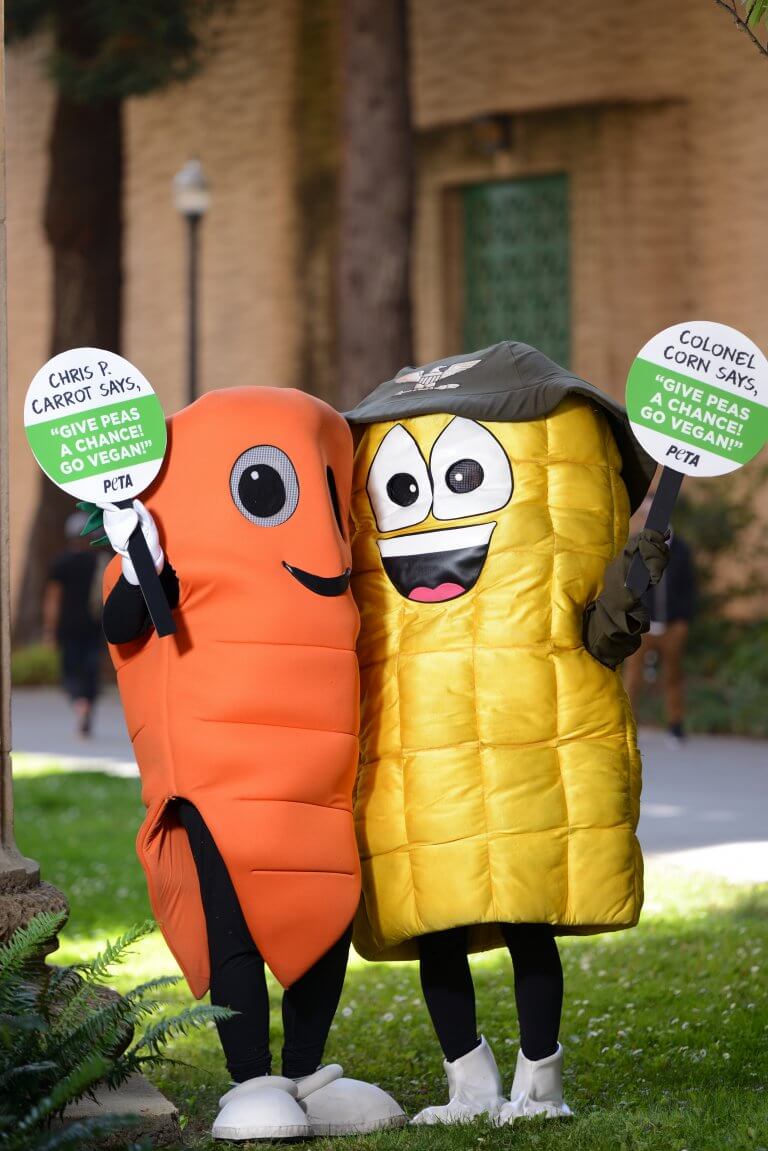
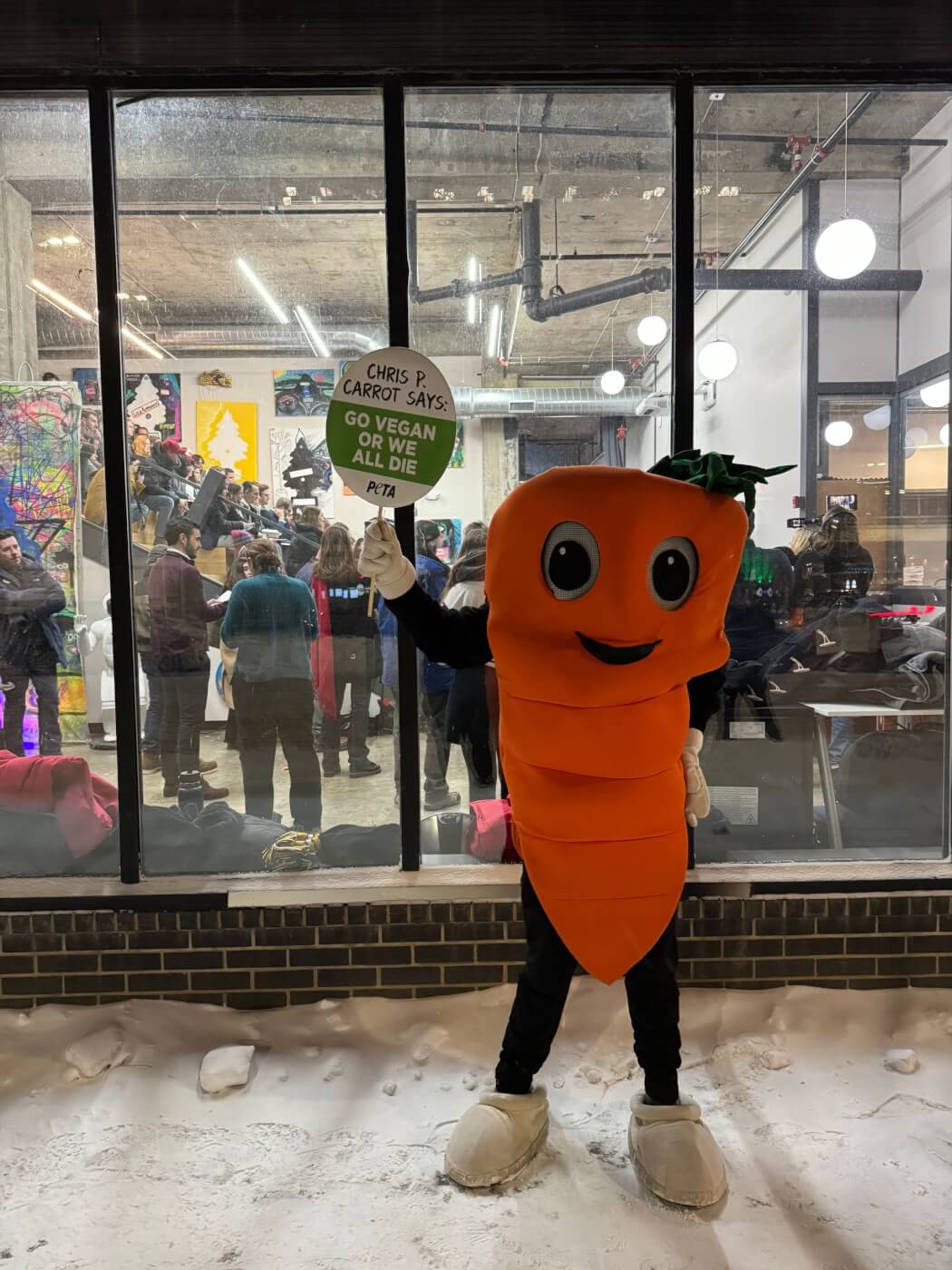
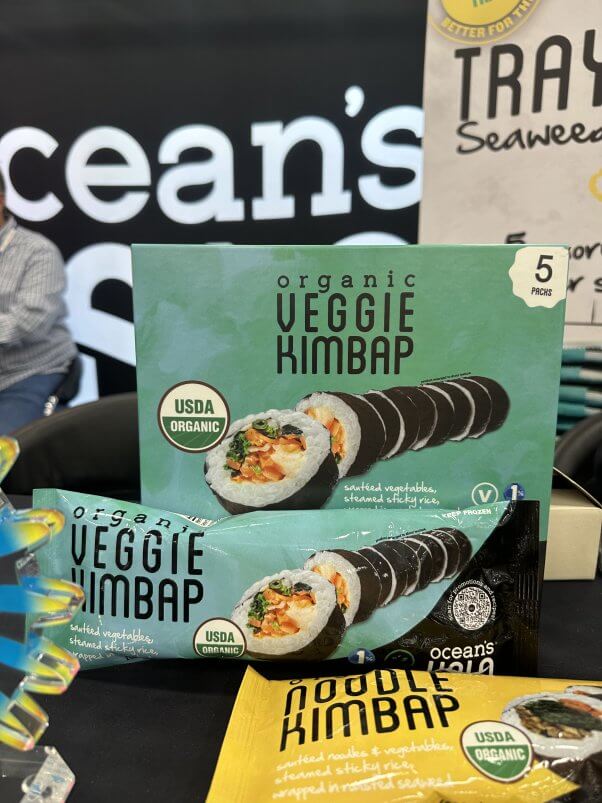
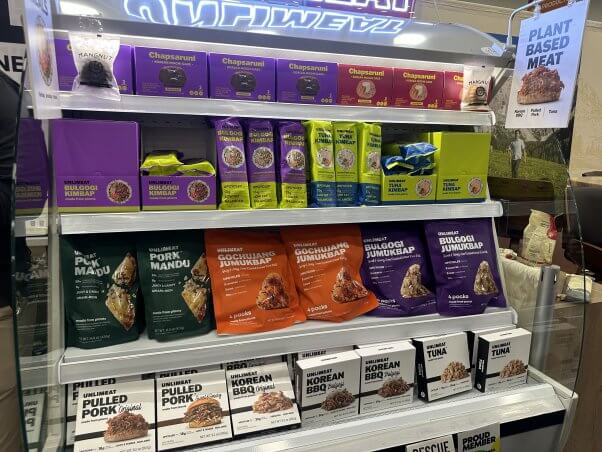
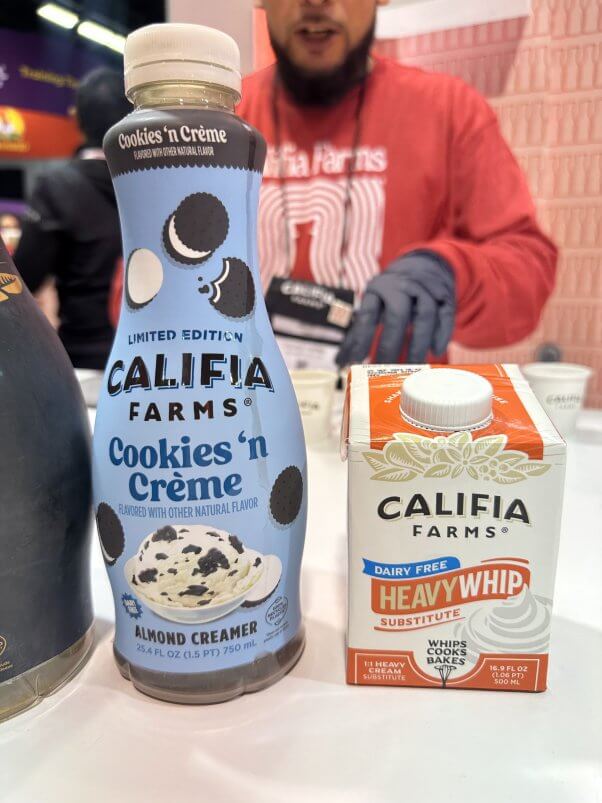




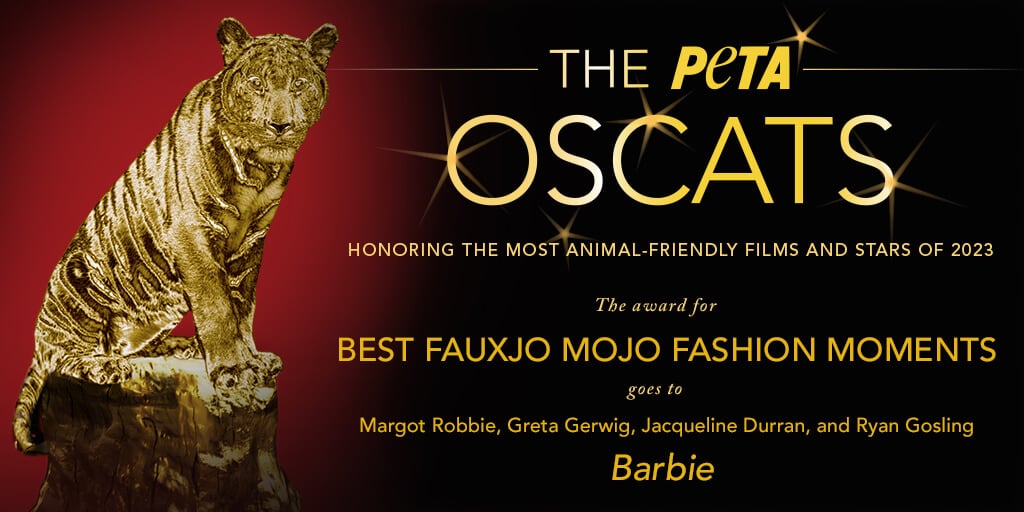







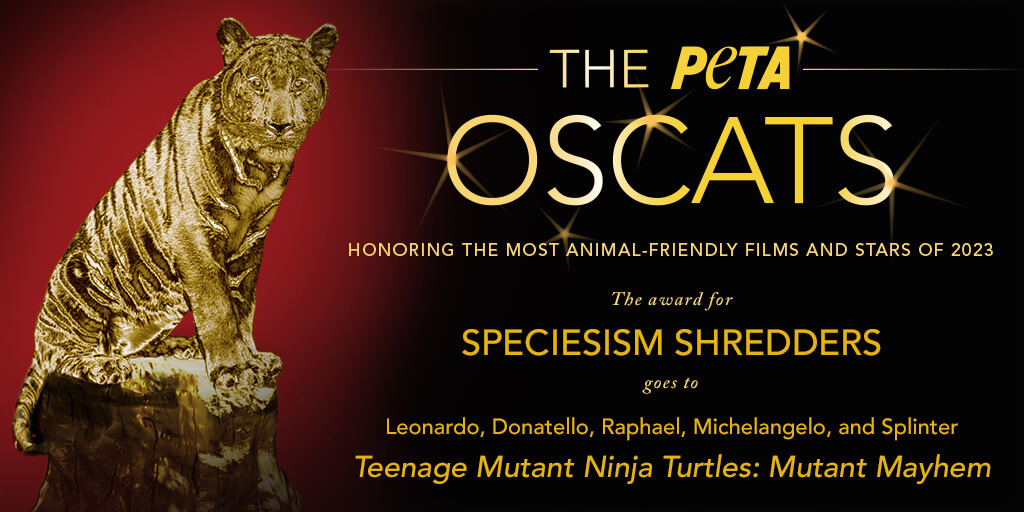




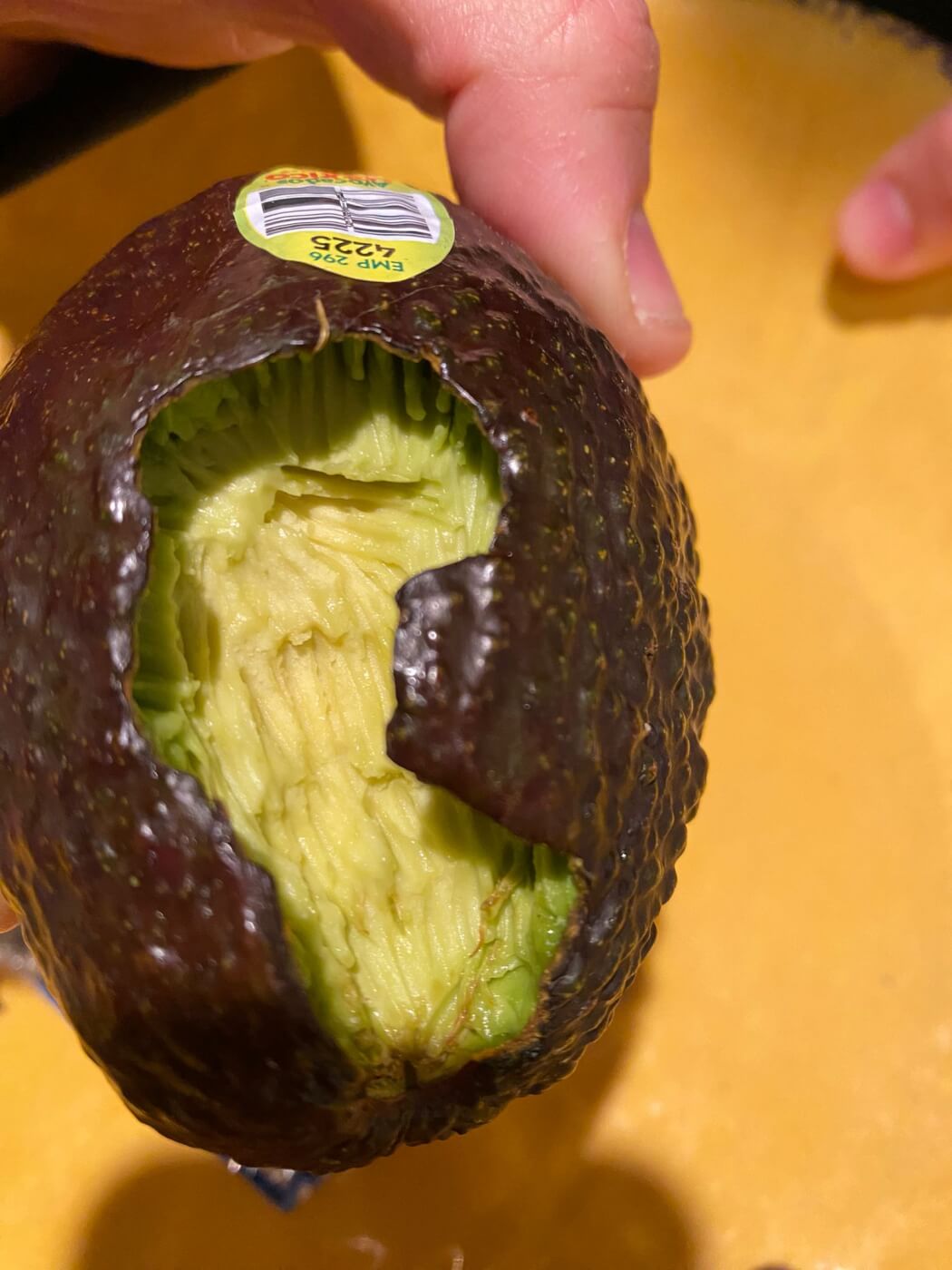




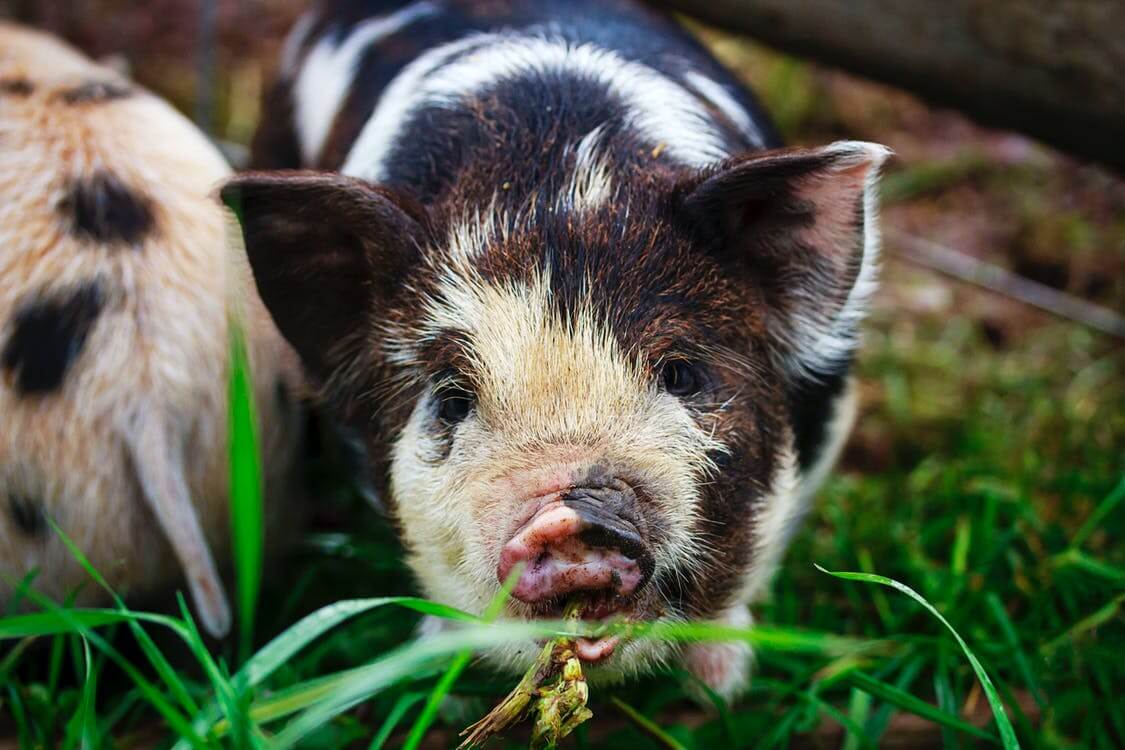
 (@thevietvegan)
(@thevietvegan)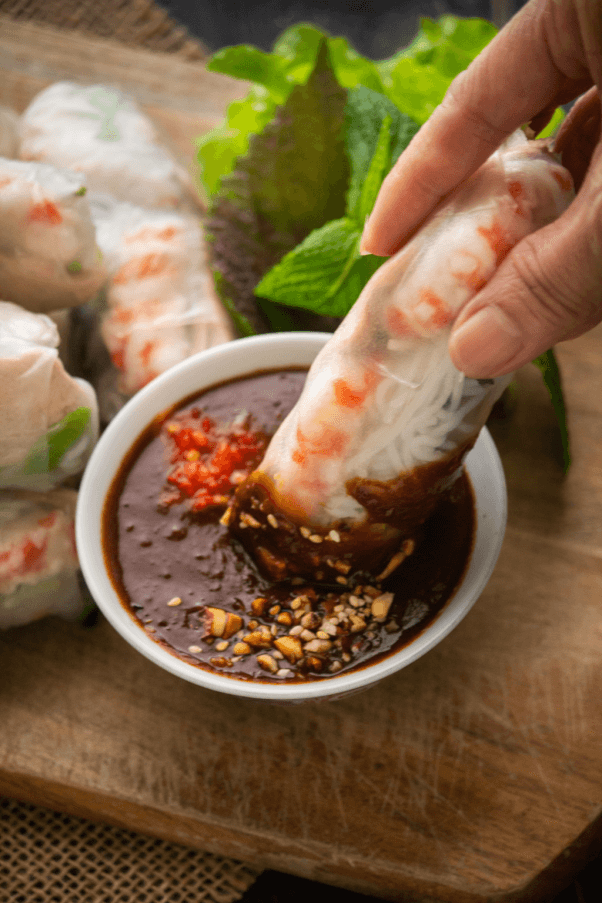
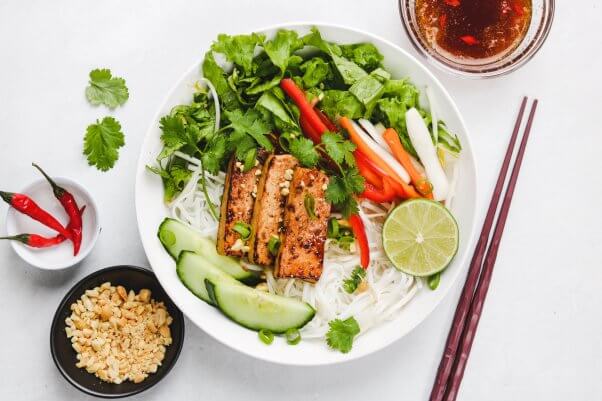
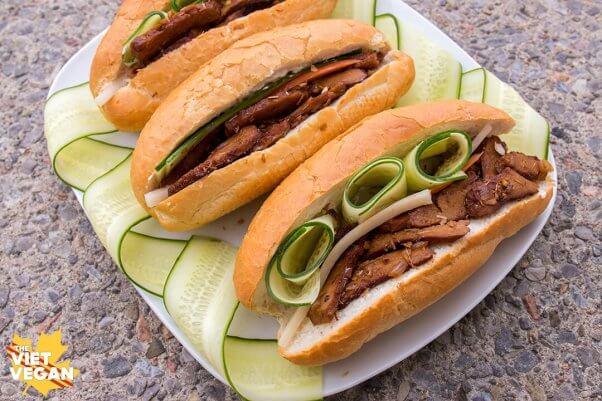
 (@smackertracker)
(@smackertracker) – Vegan Grocery Guru (@bigboxvegan)
– Vegan Grocery Guru (@bigboxvegan) (@tommyd.03)
(@tommyd.03)

